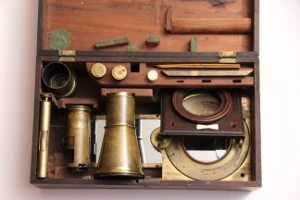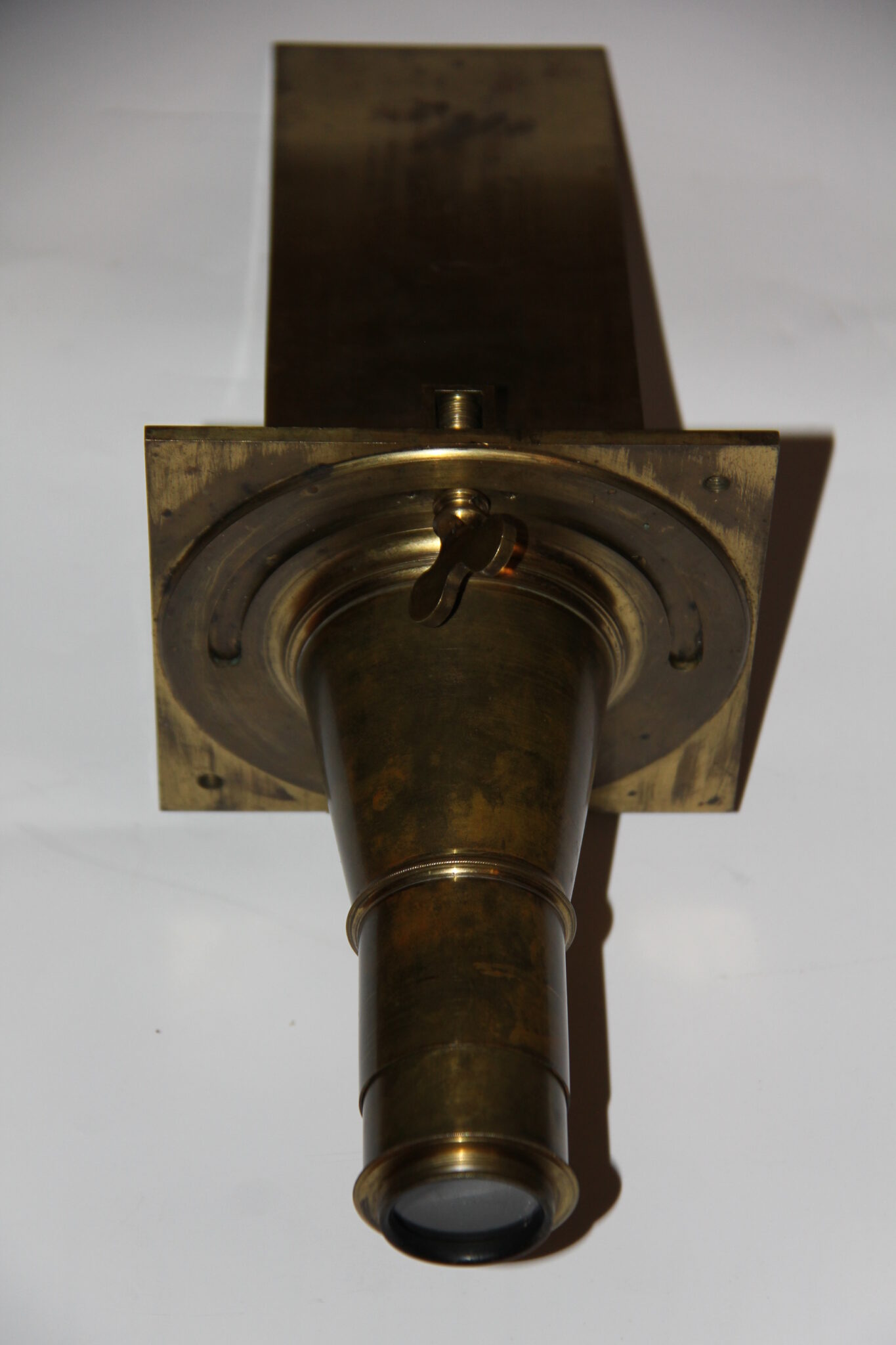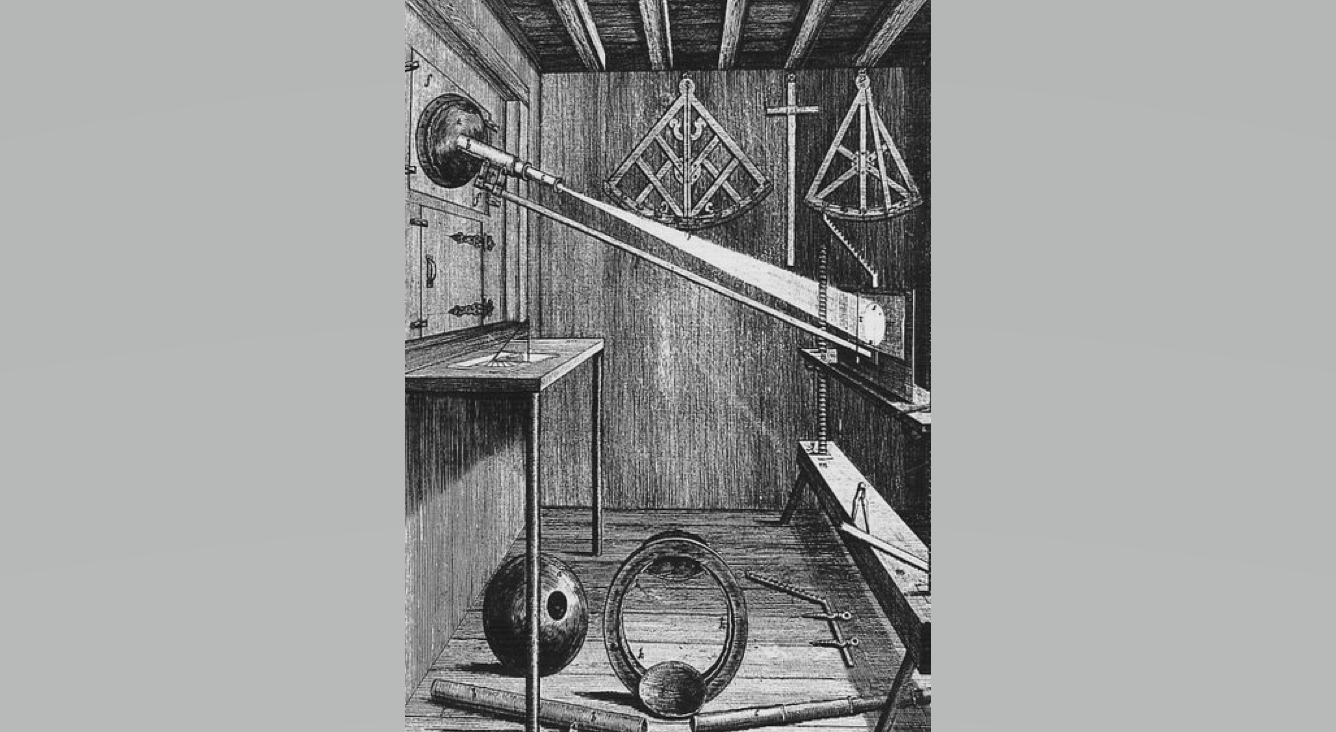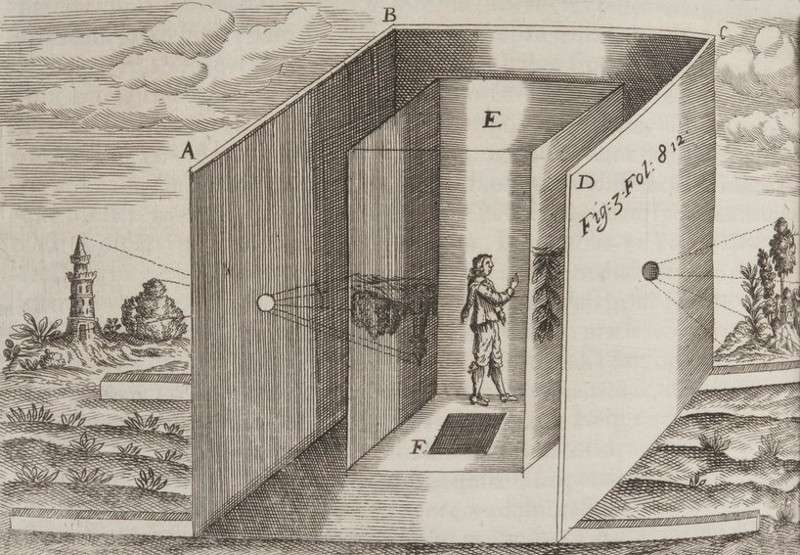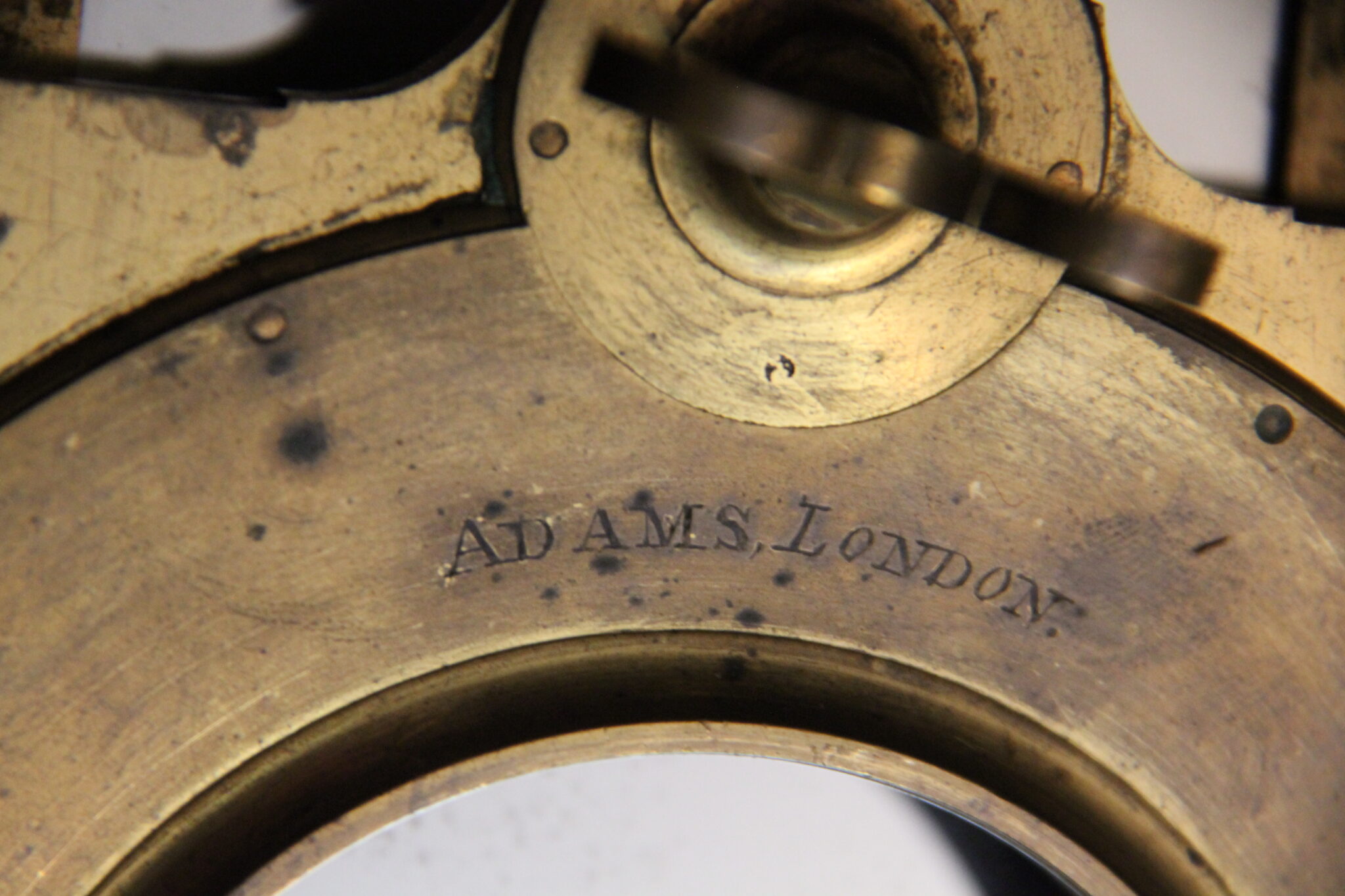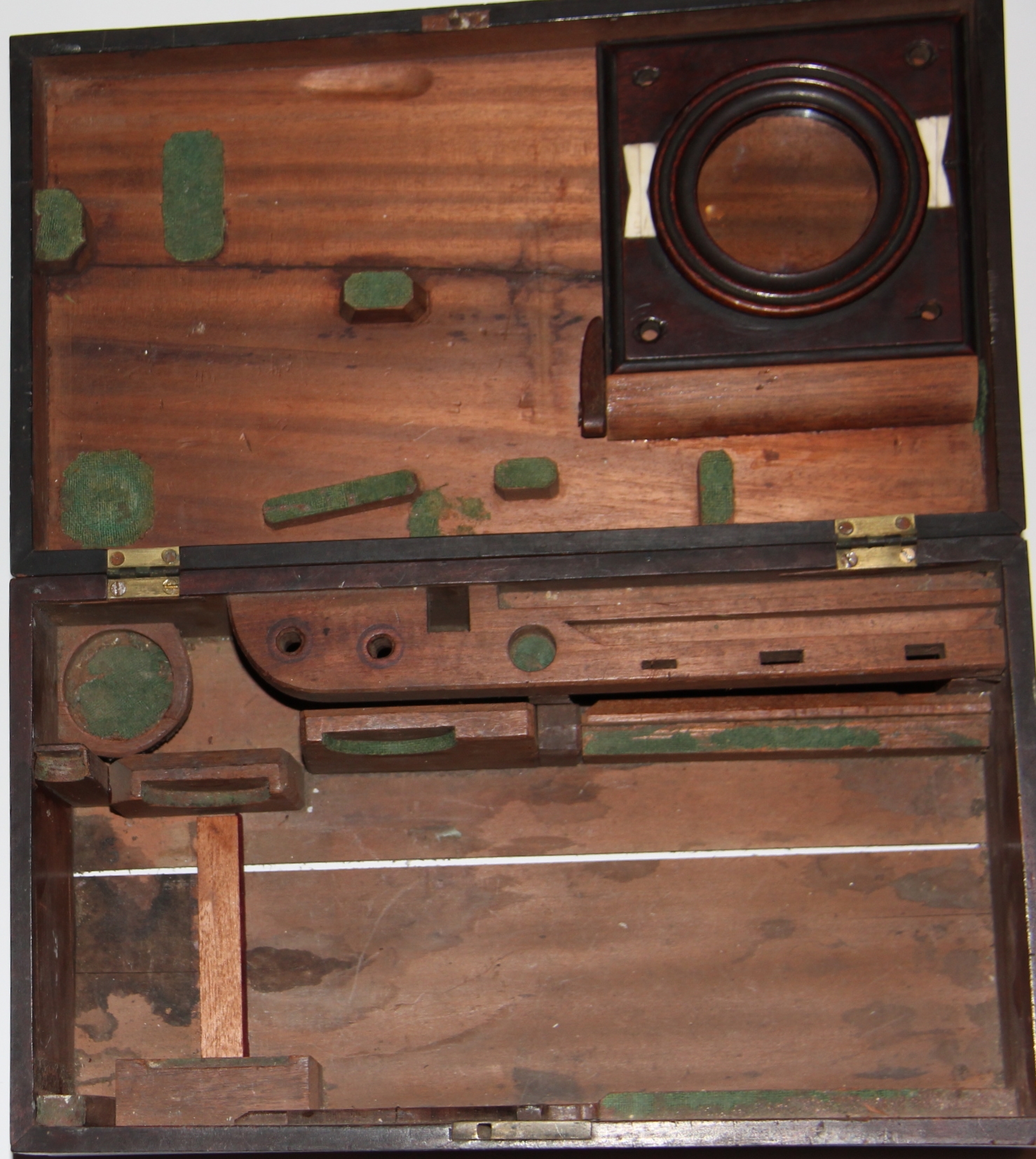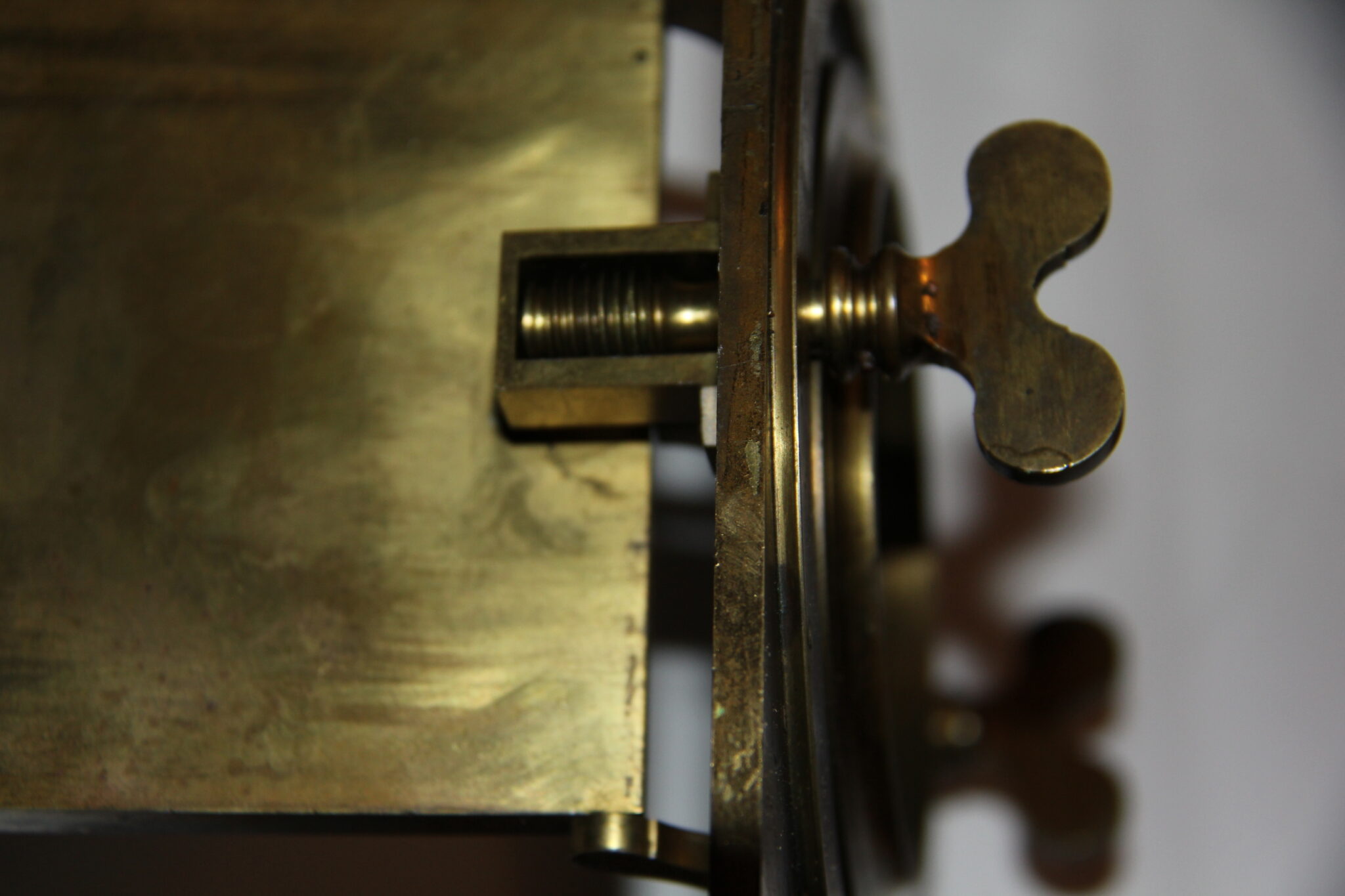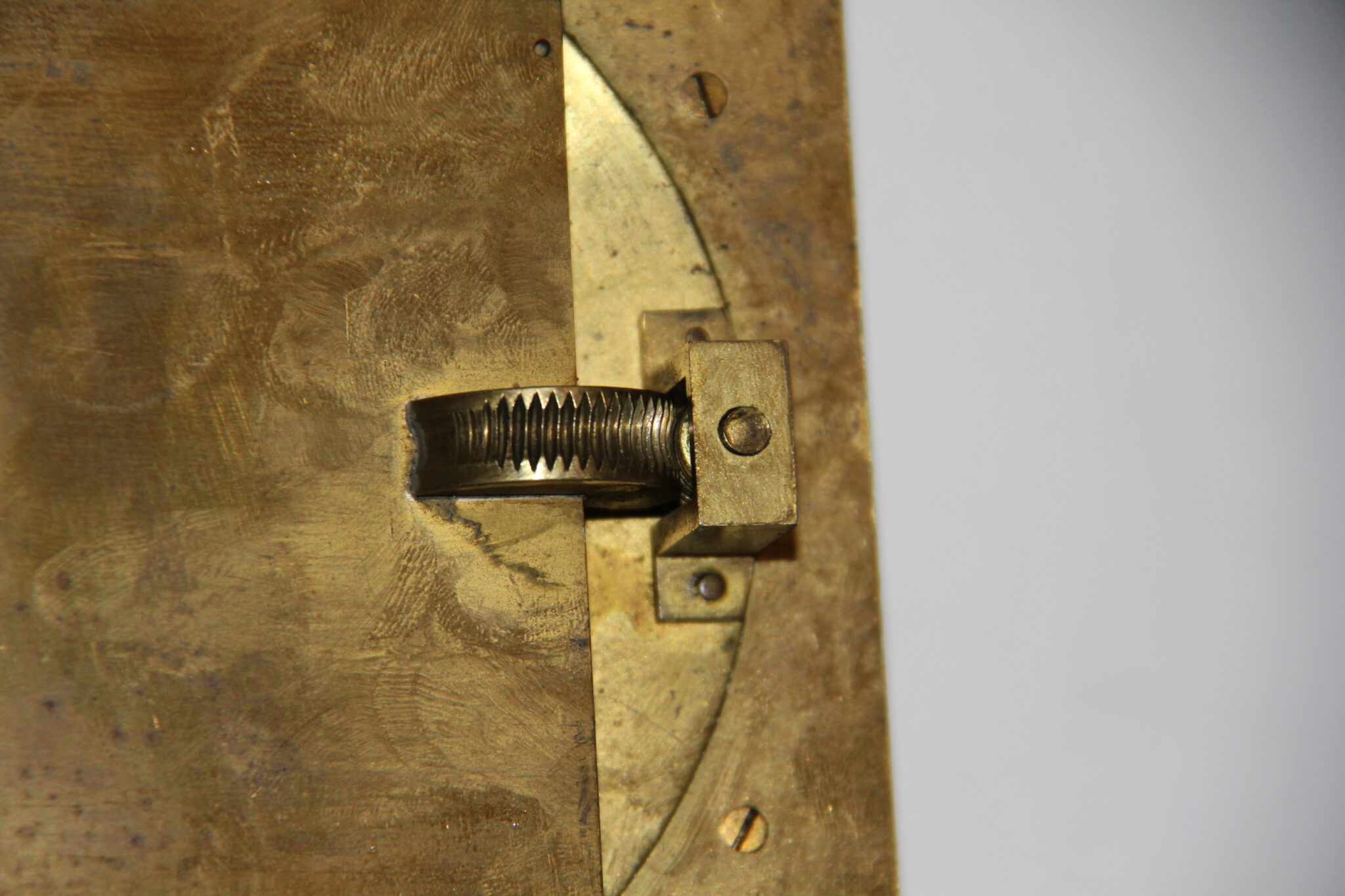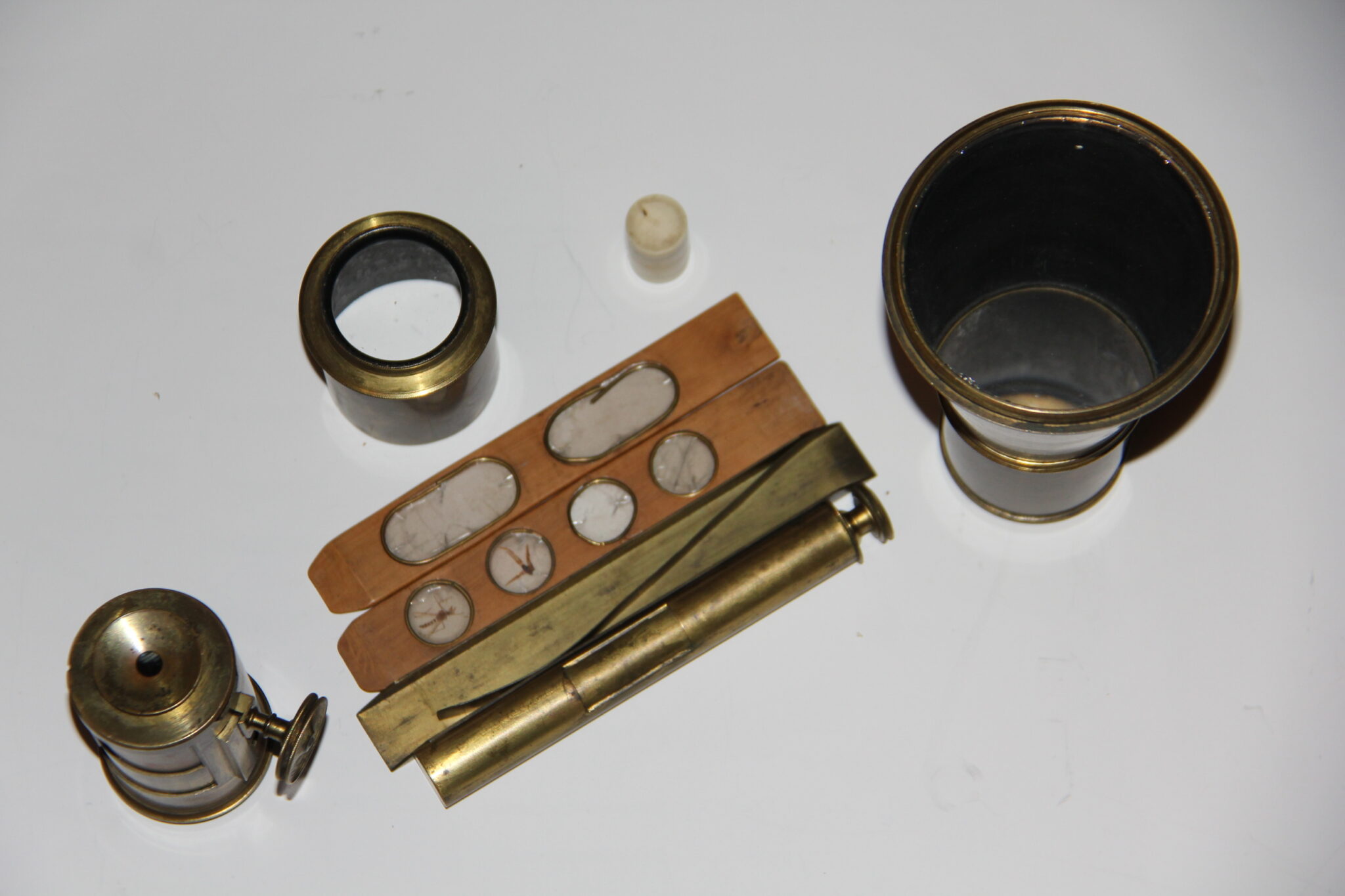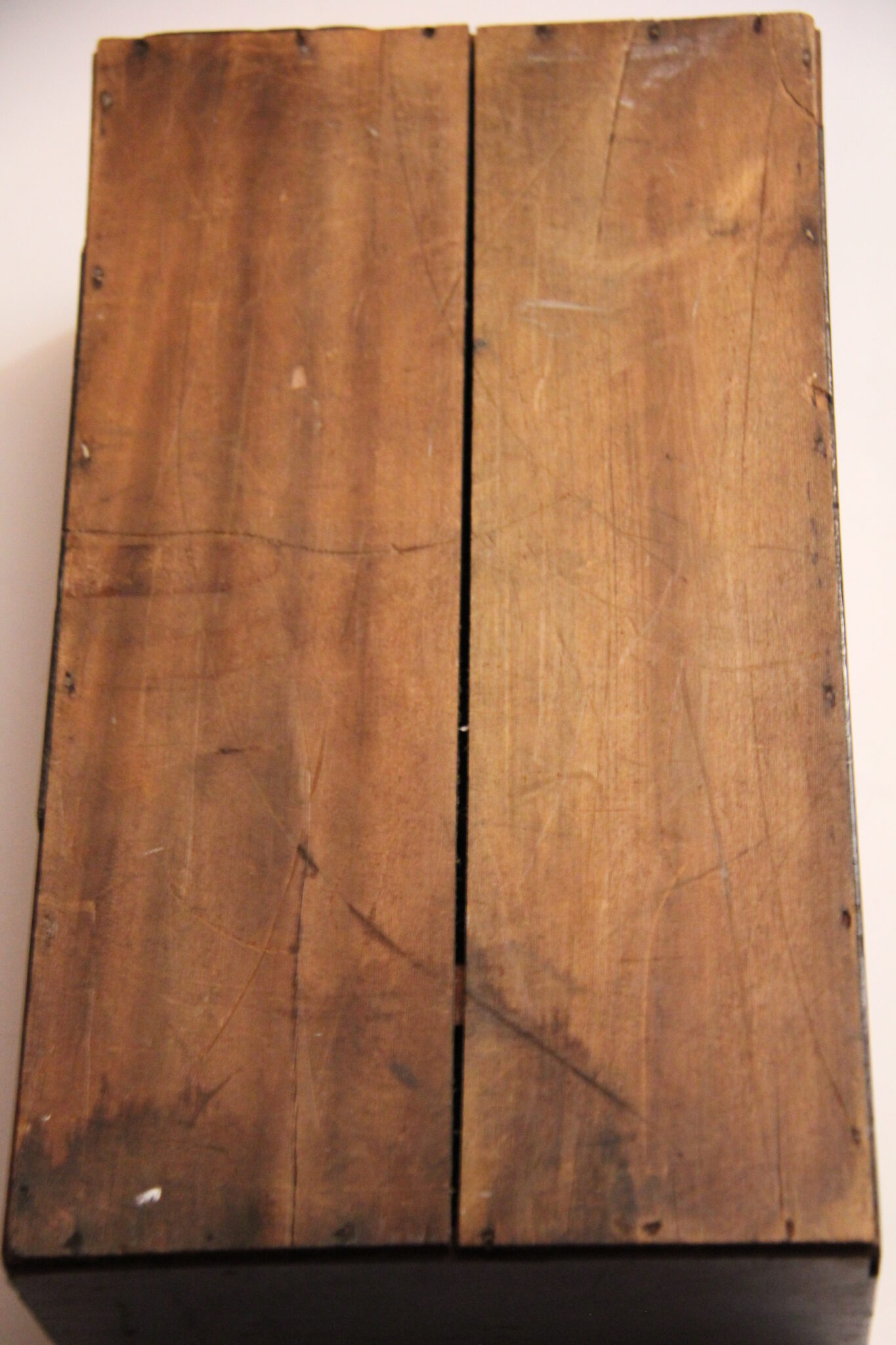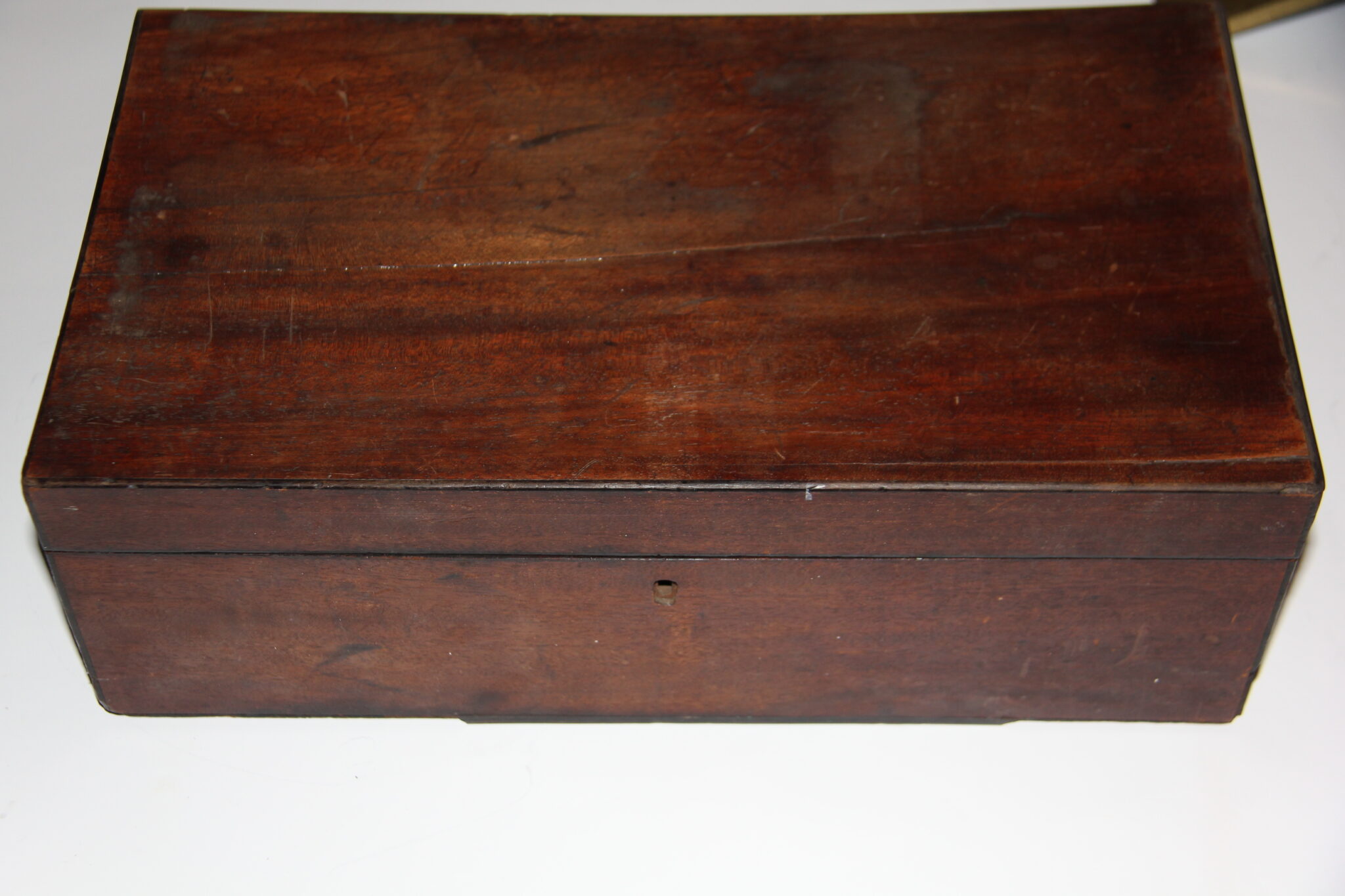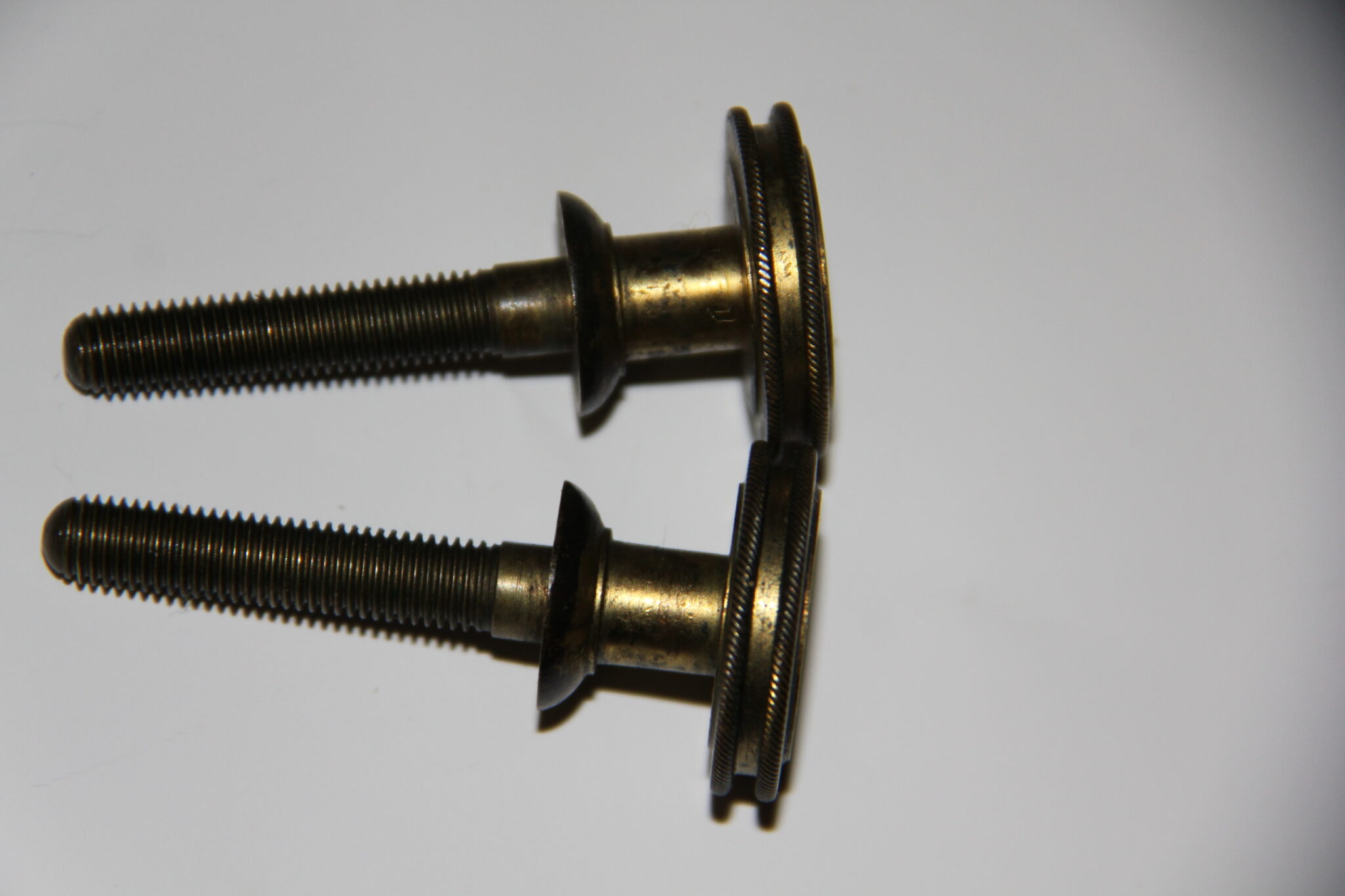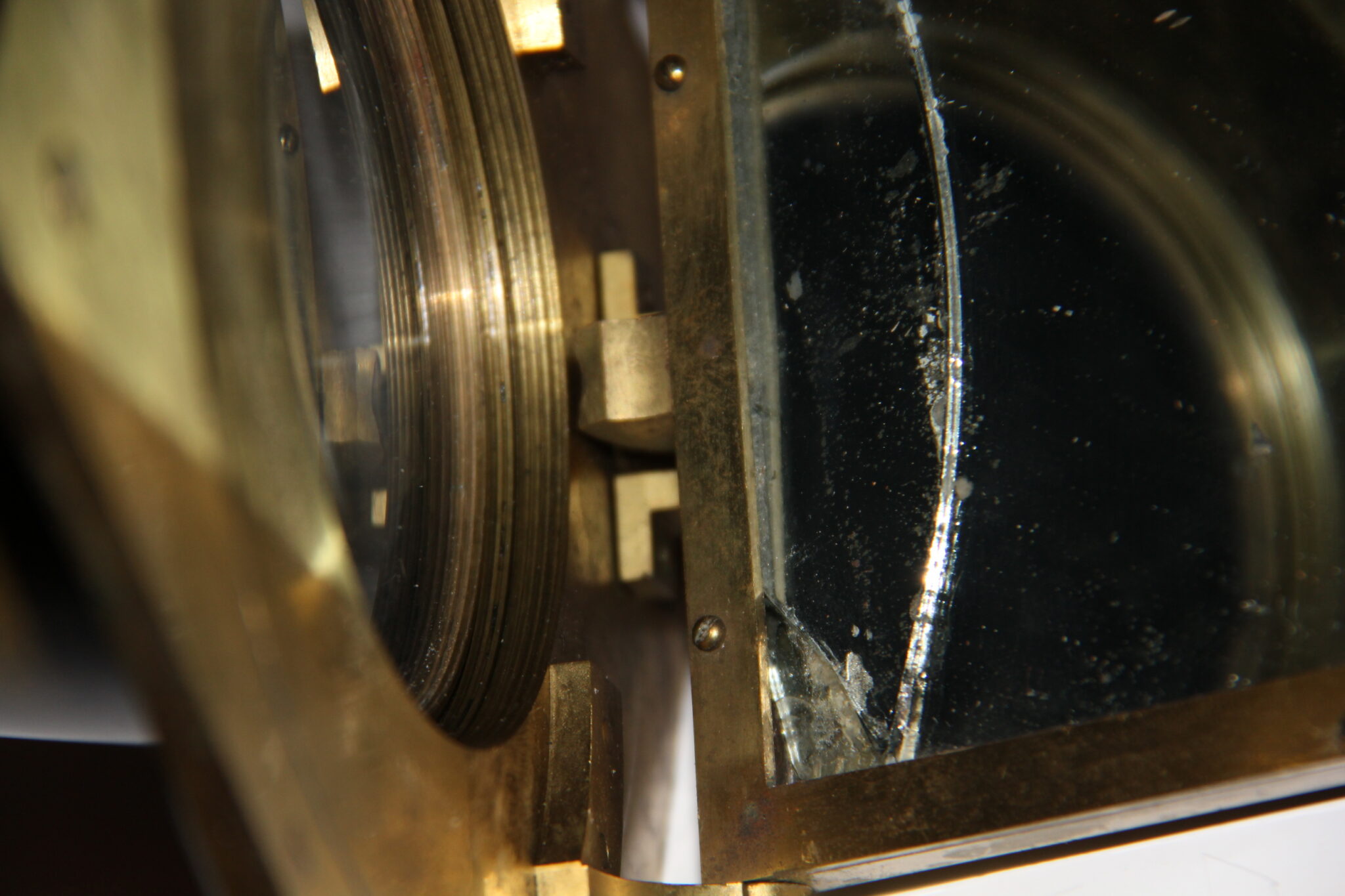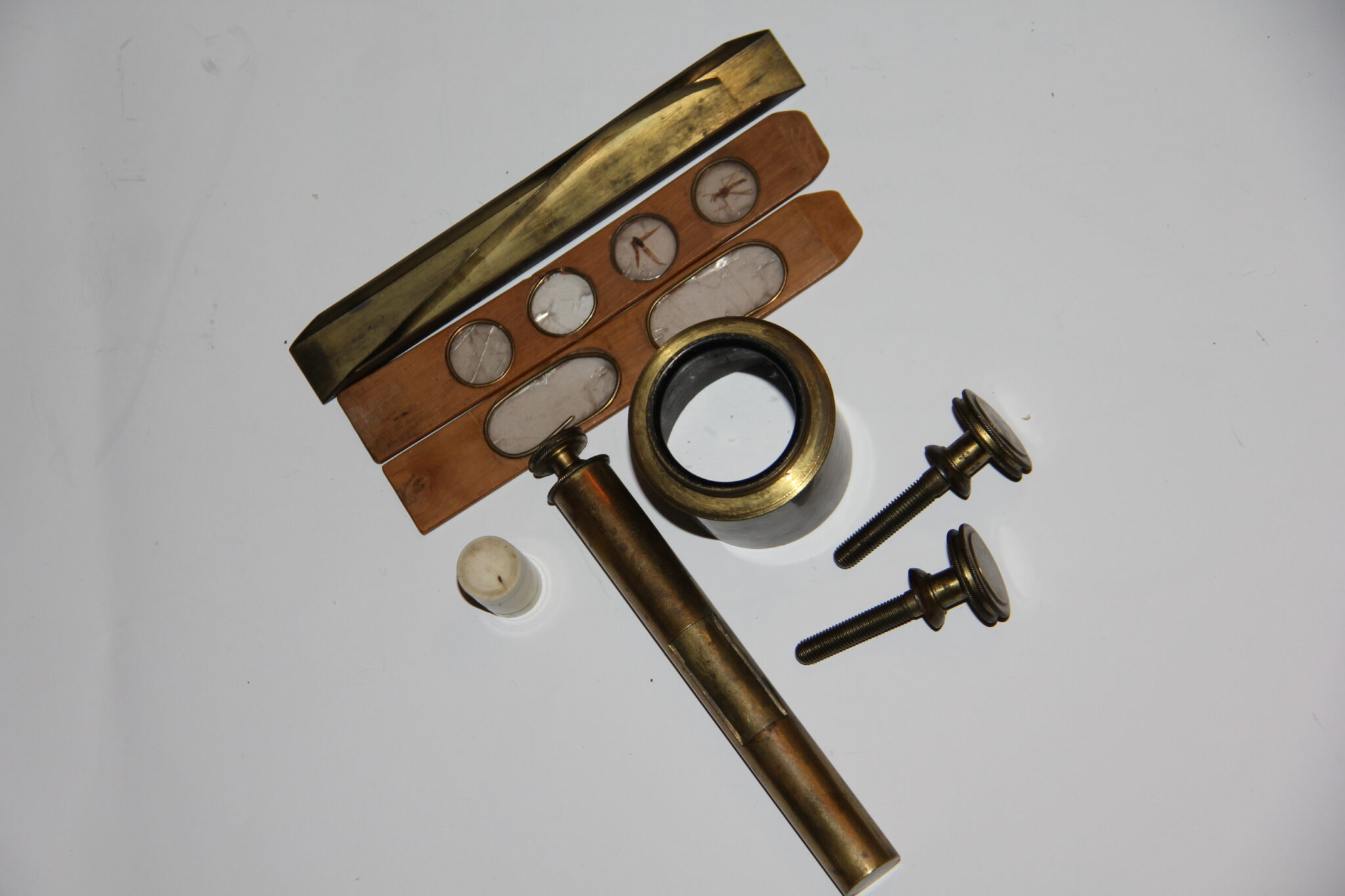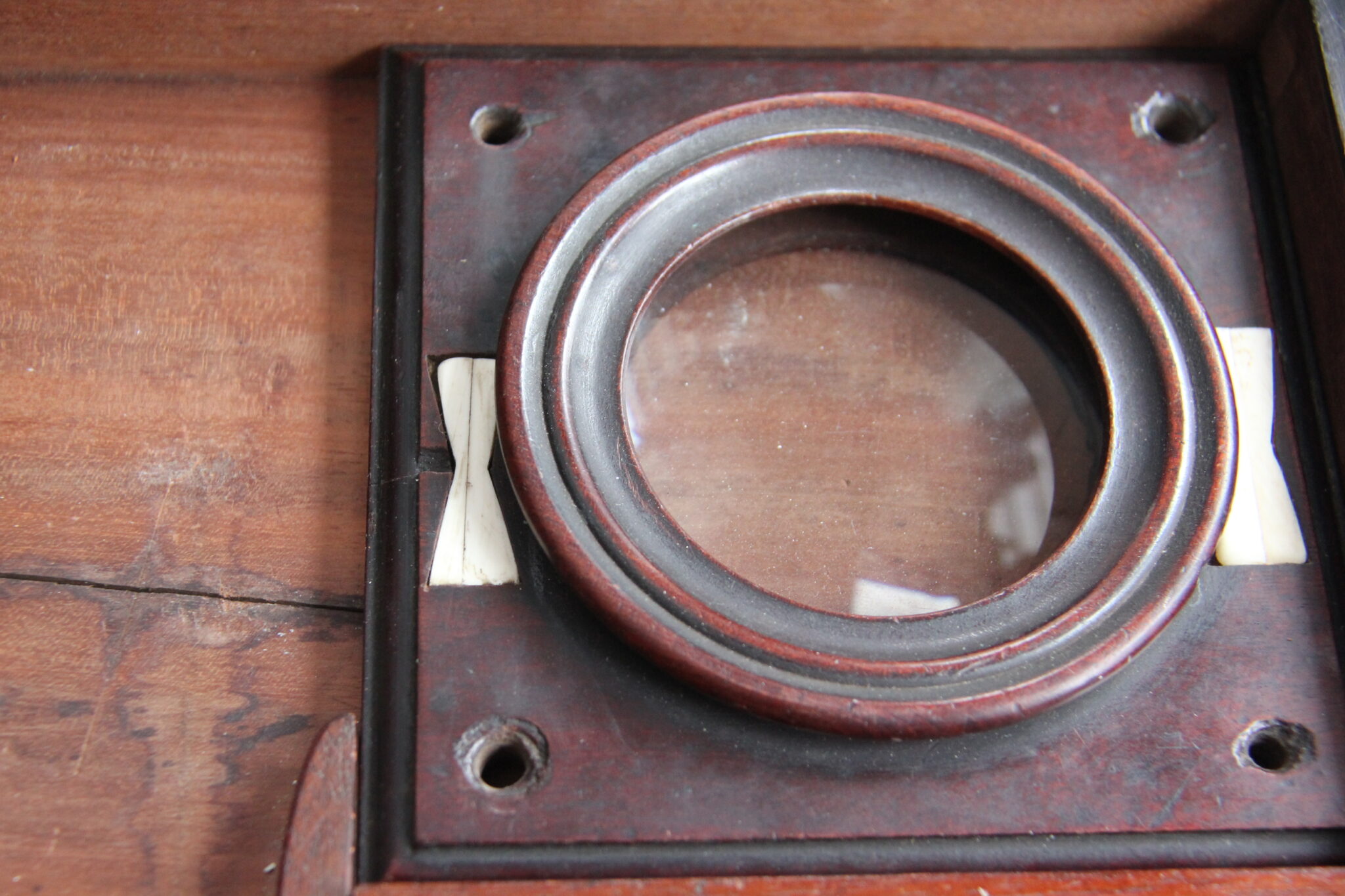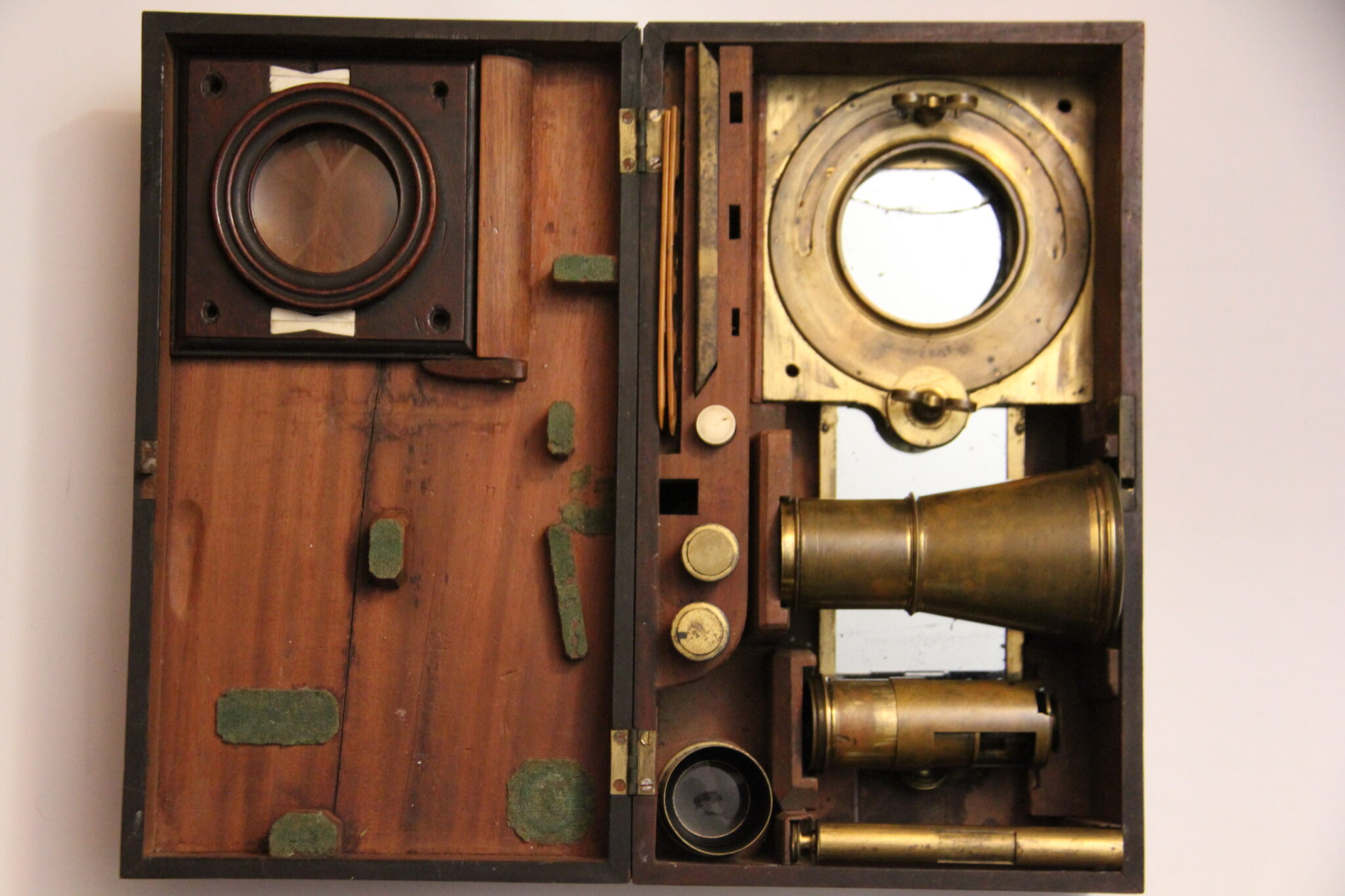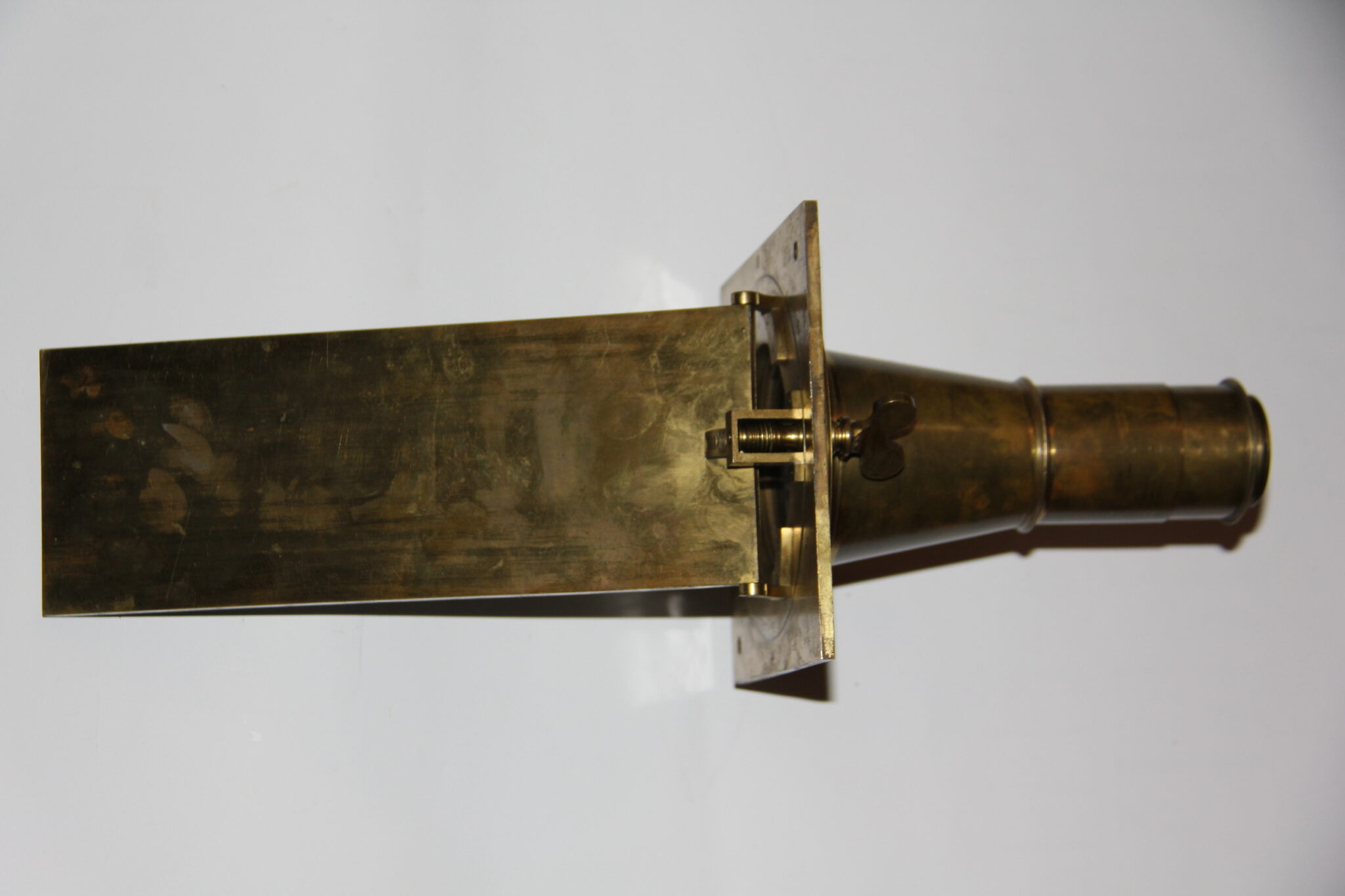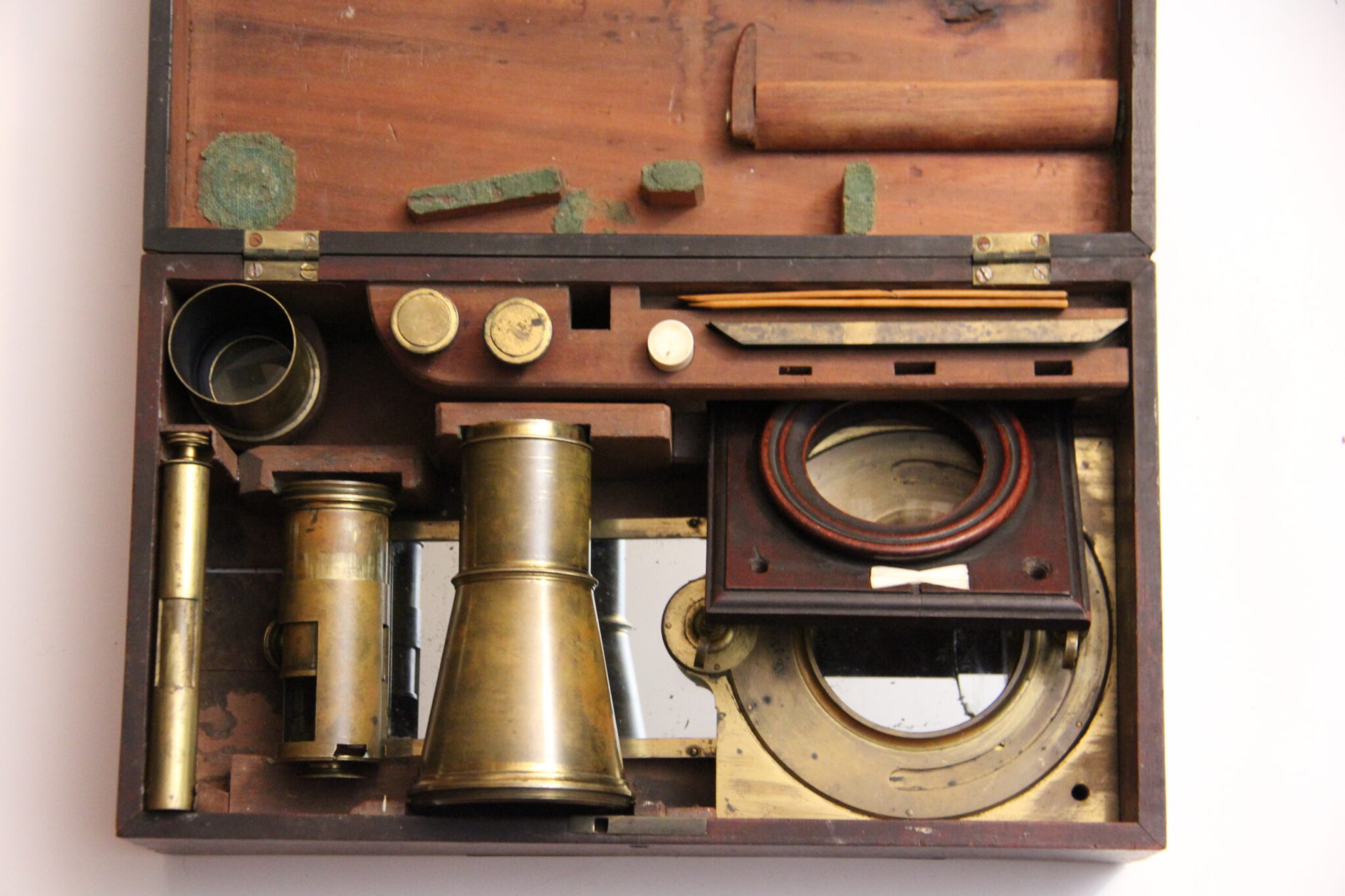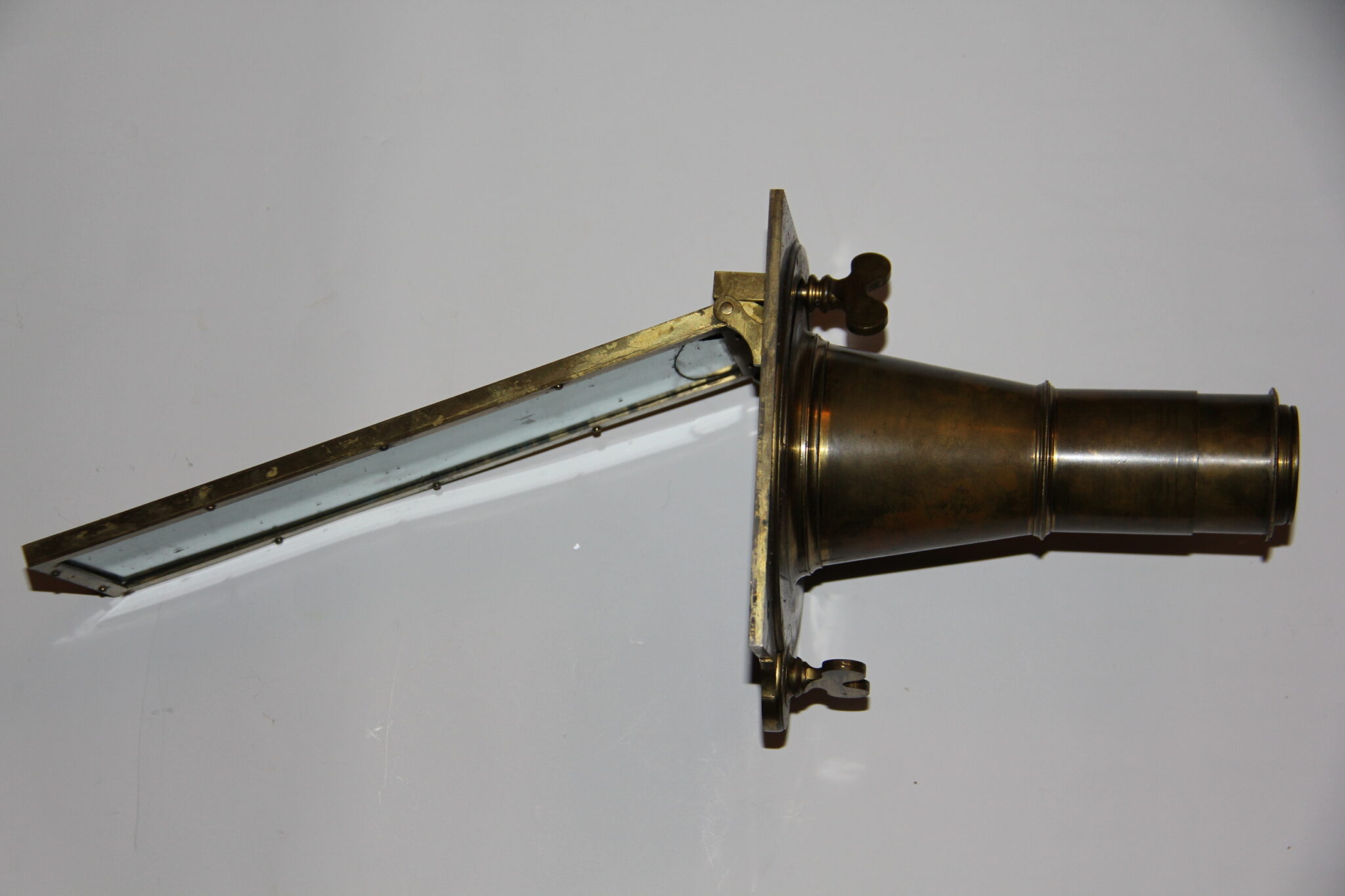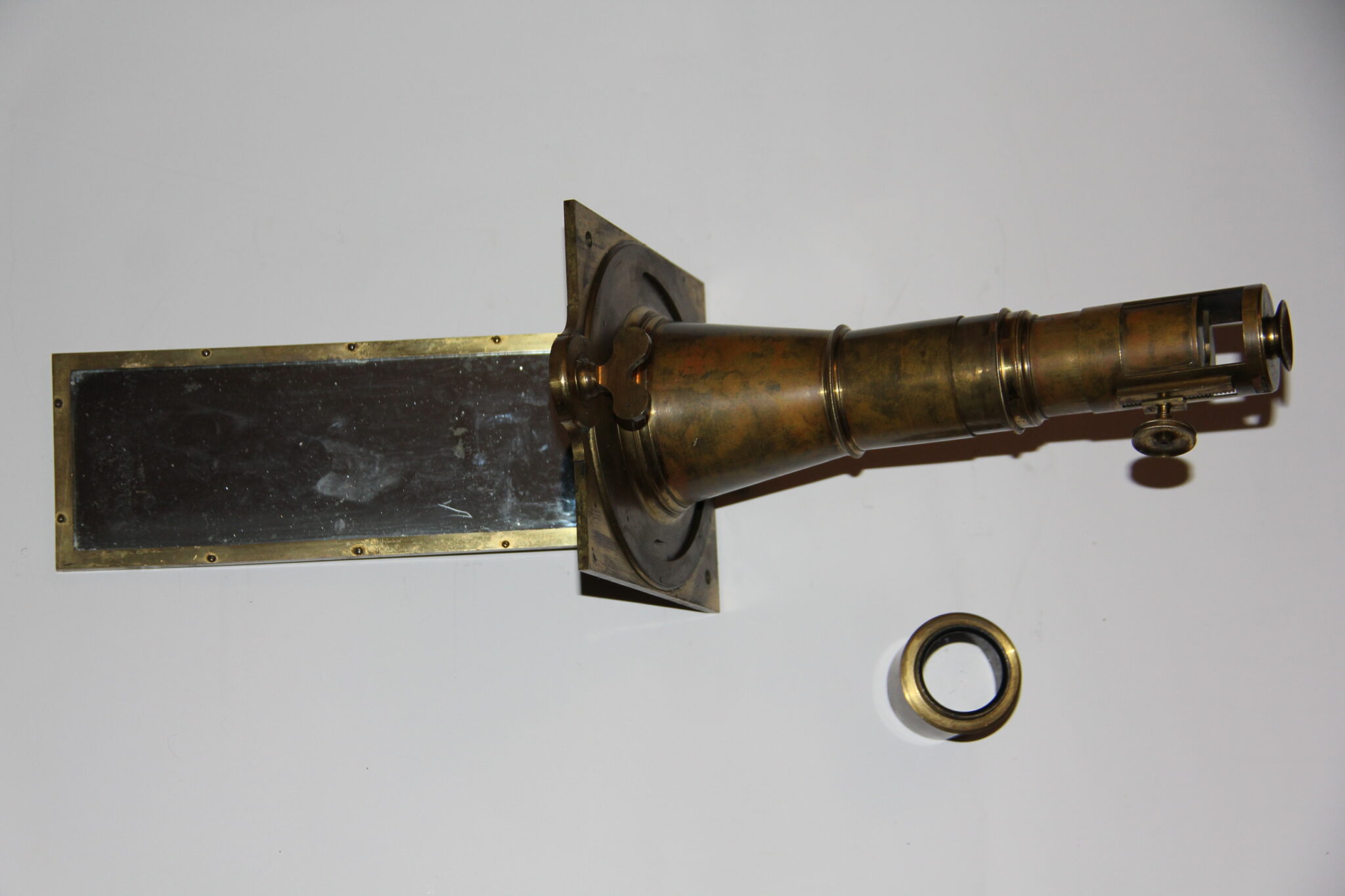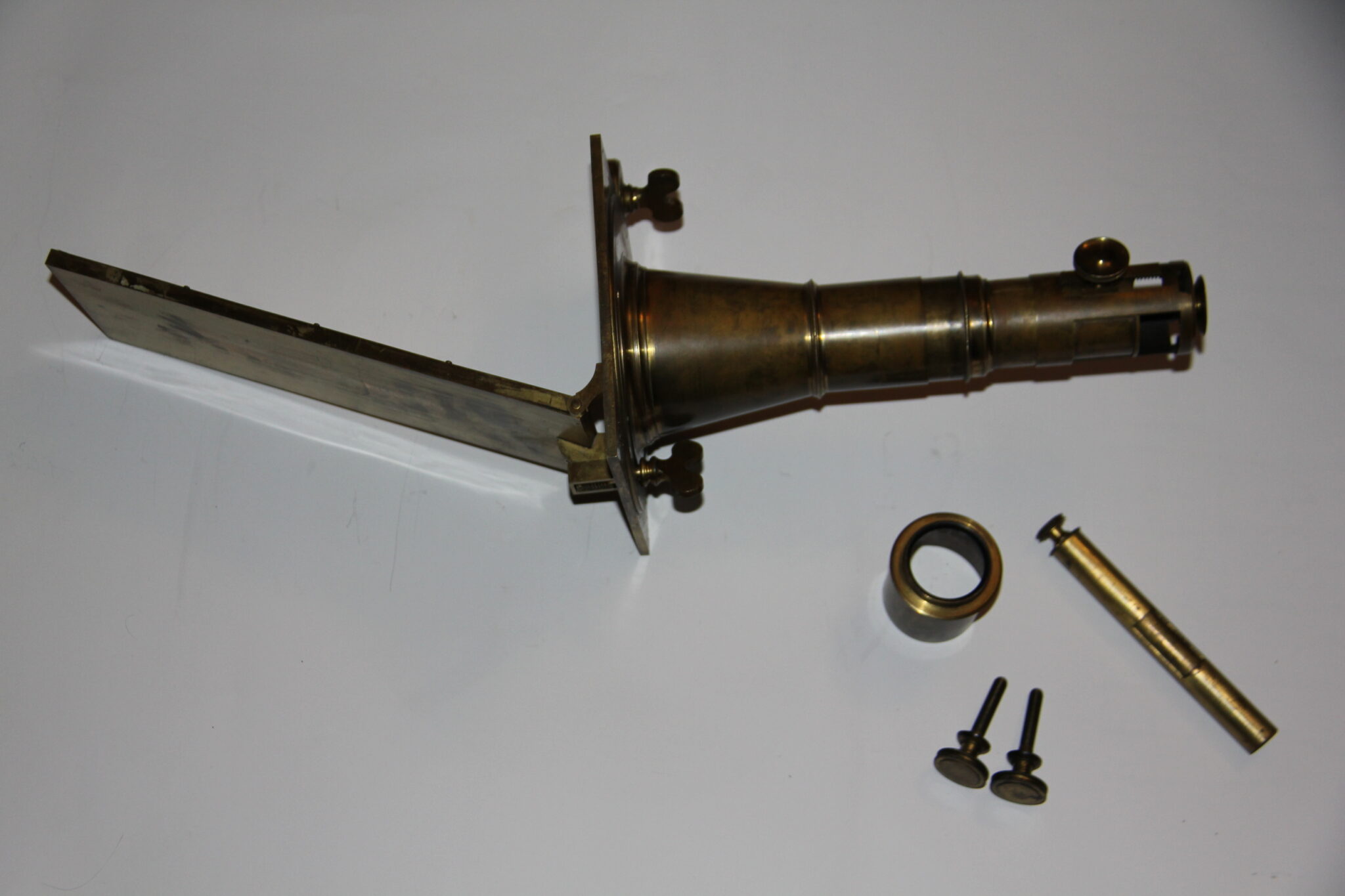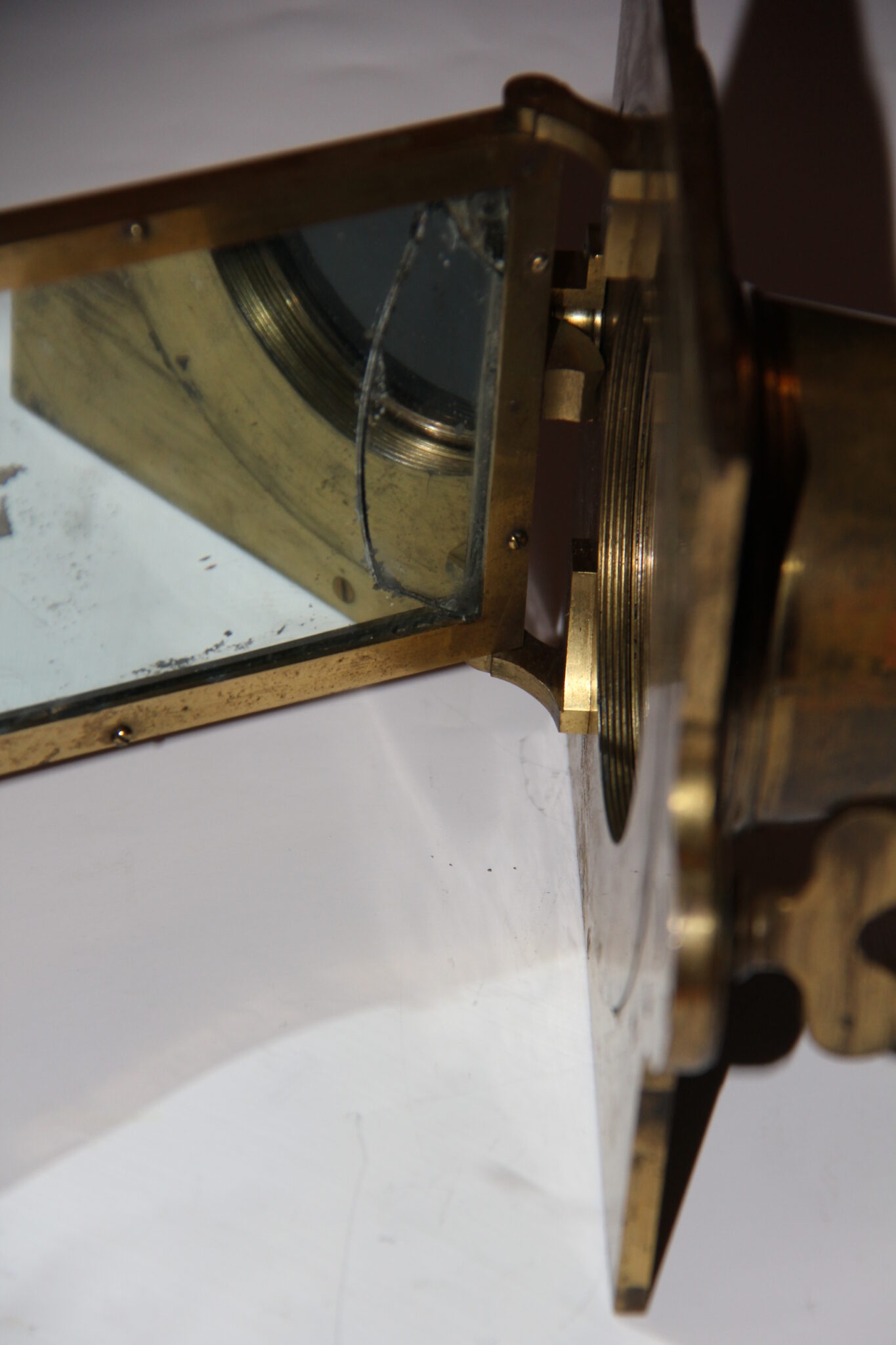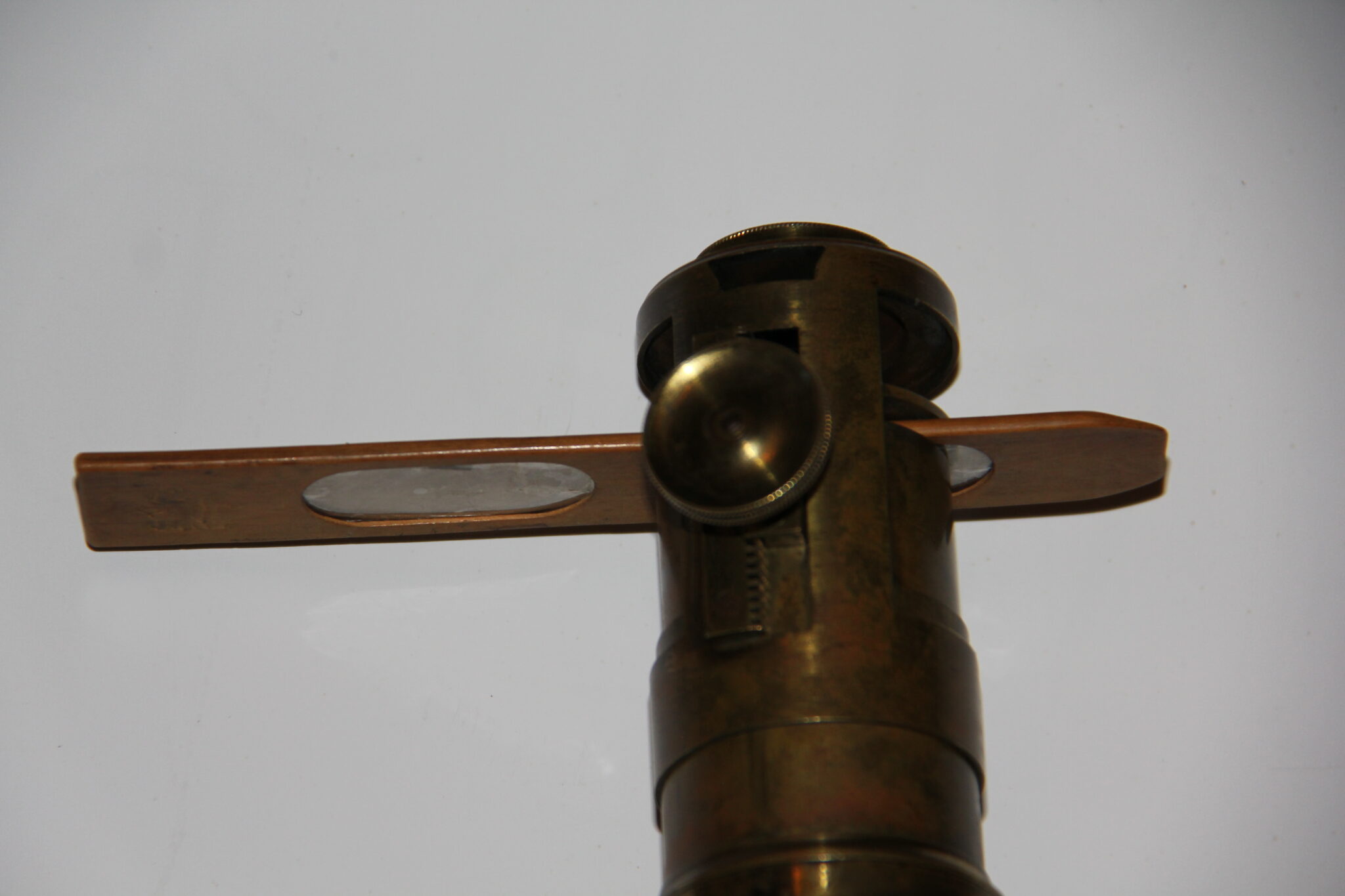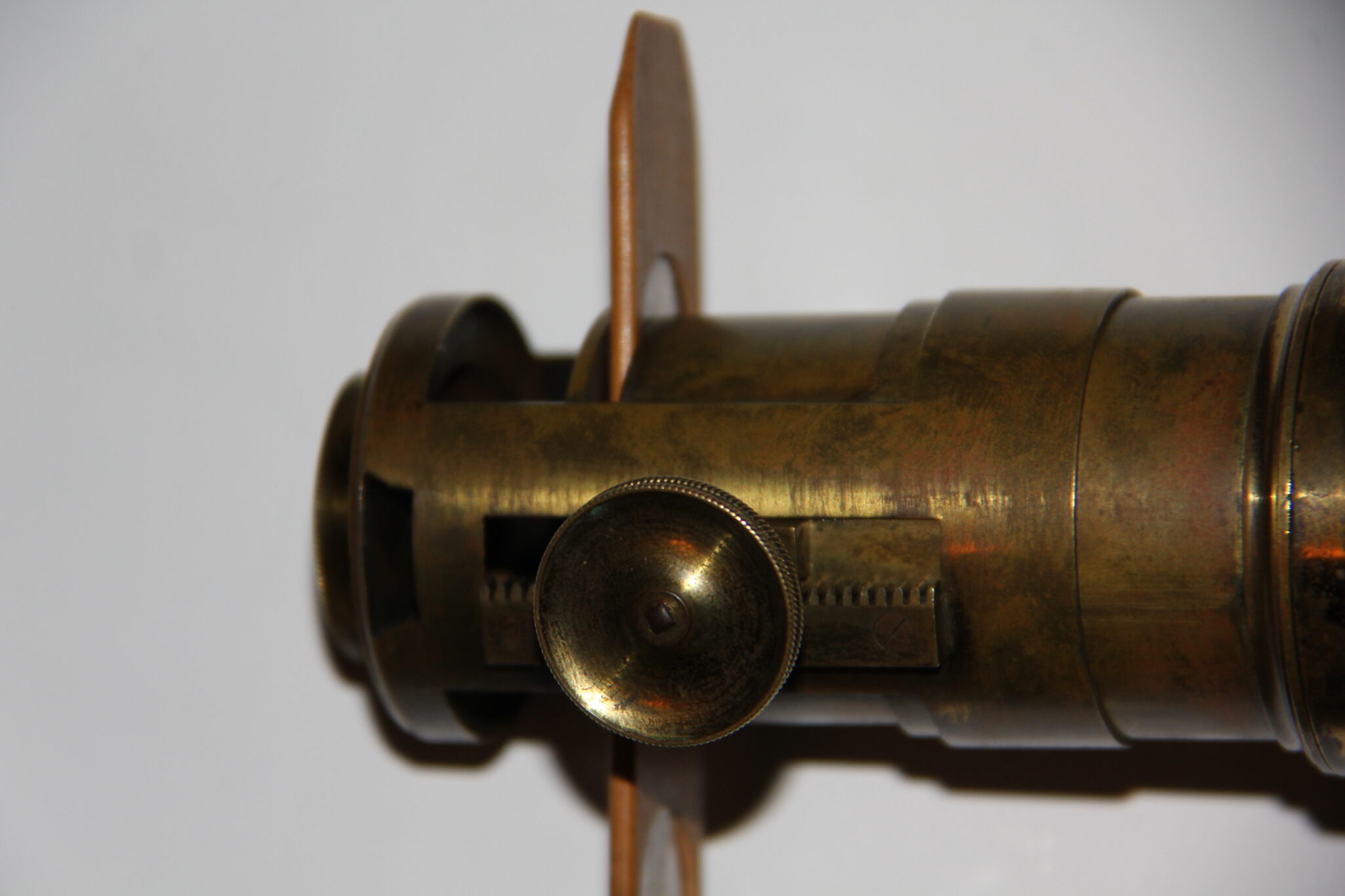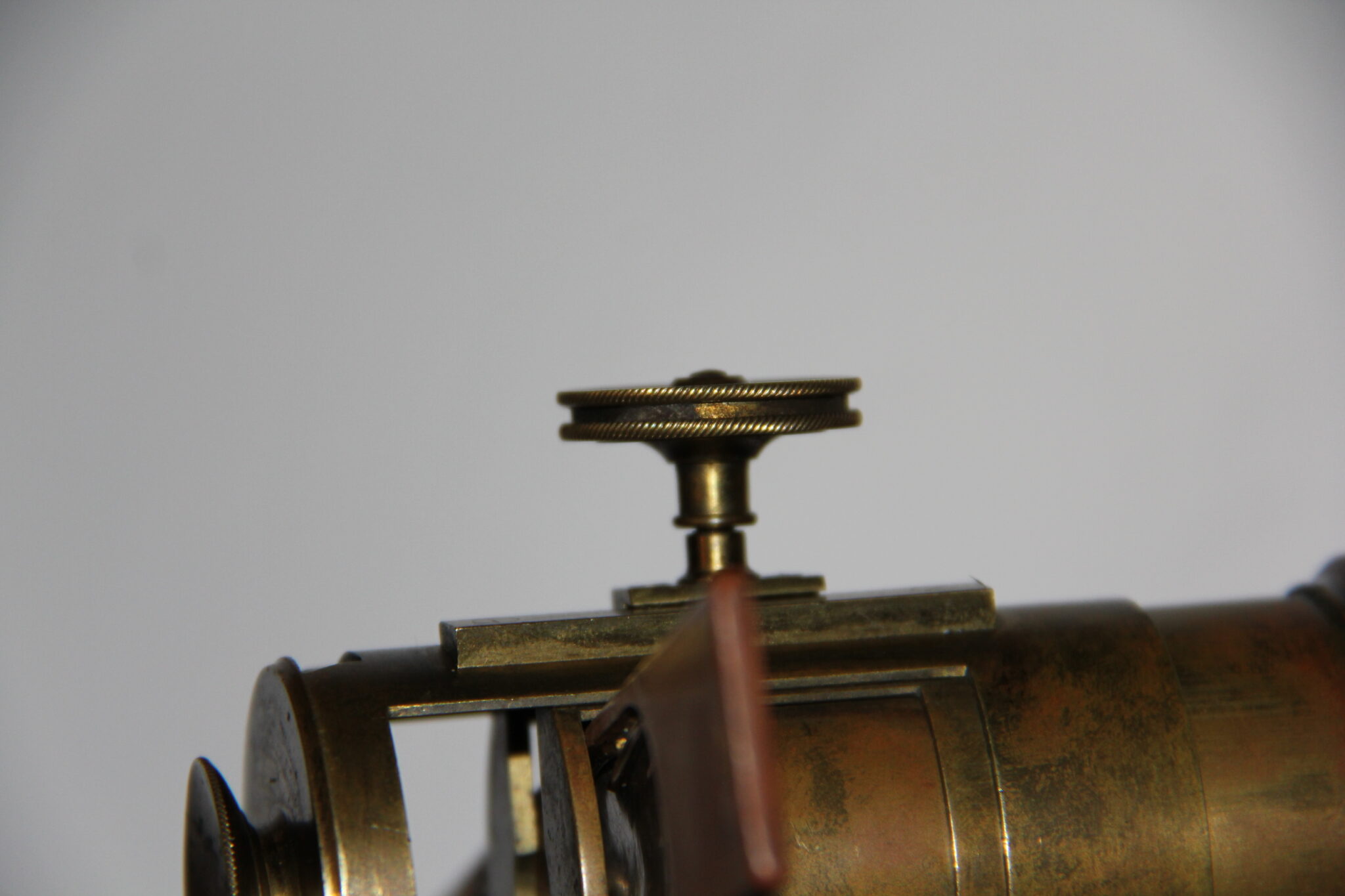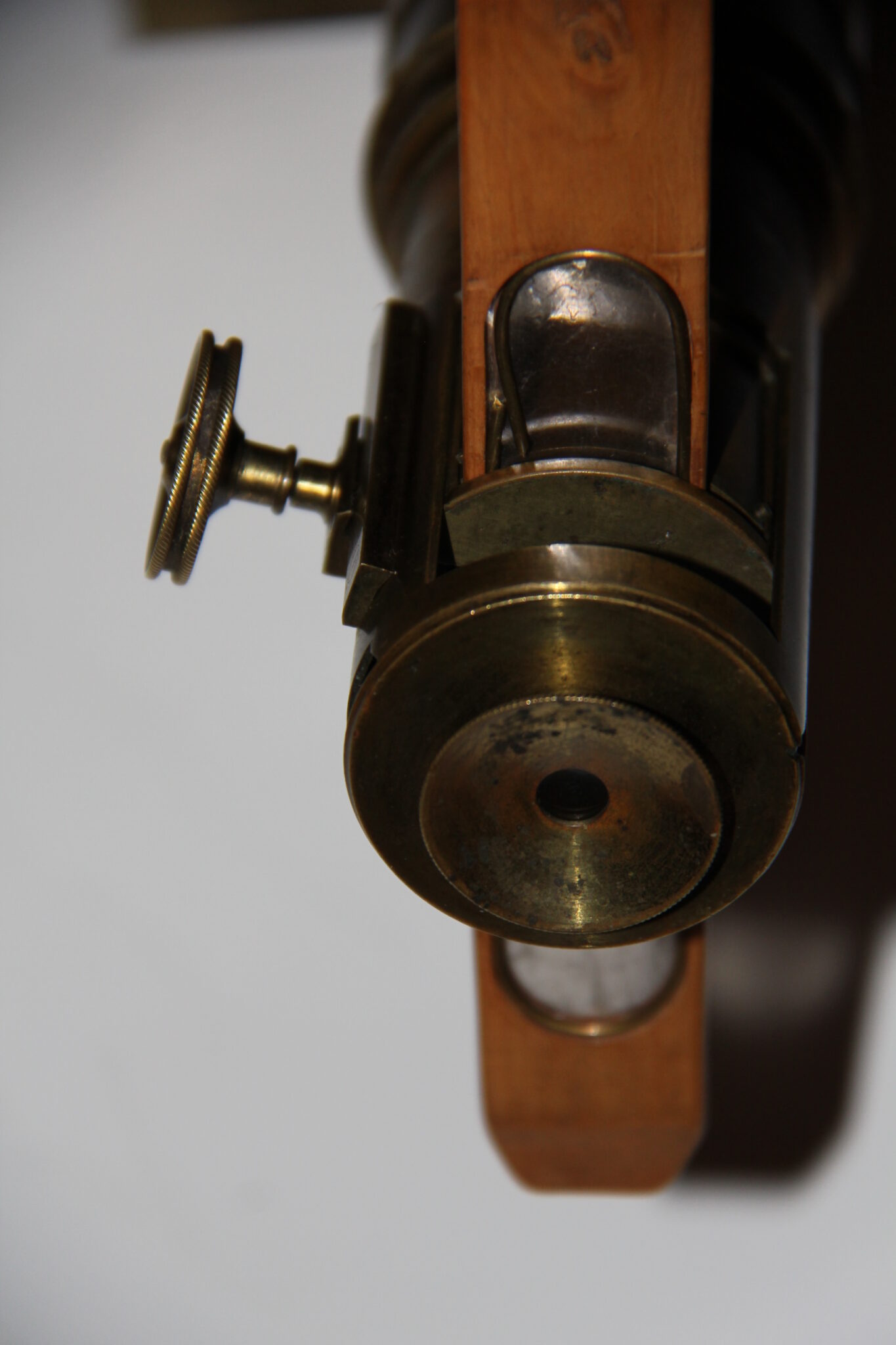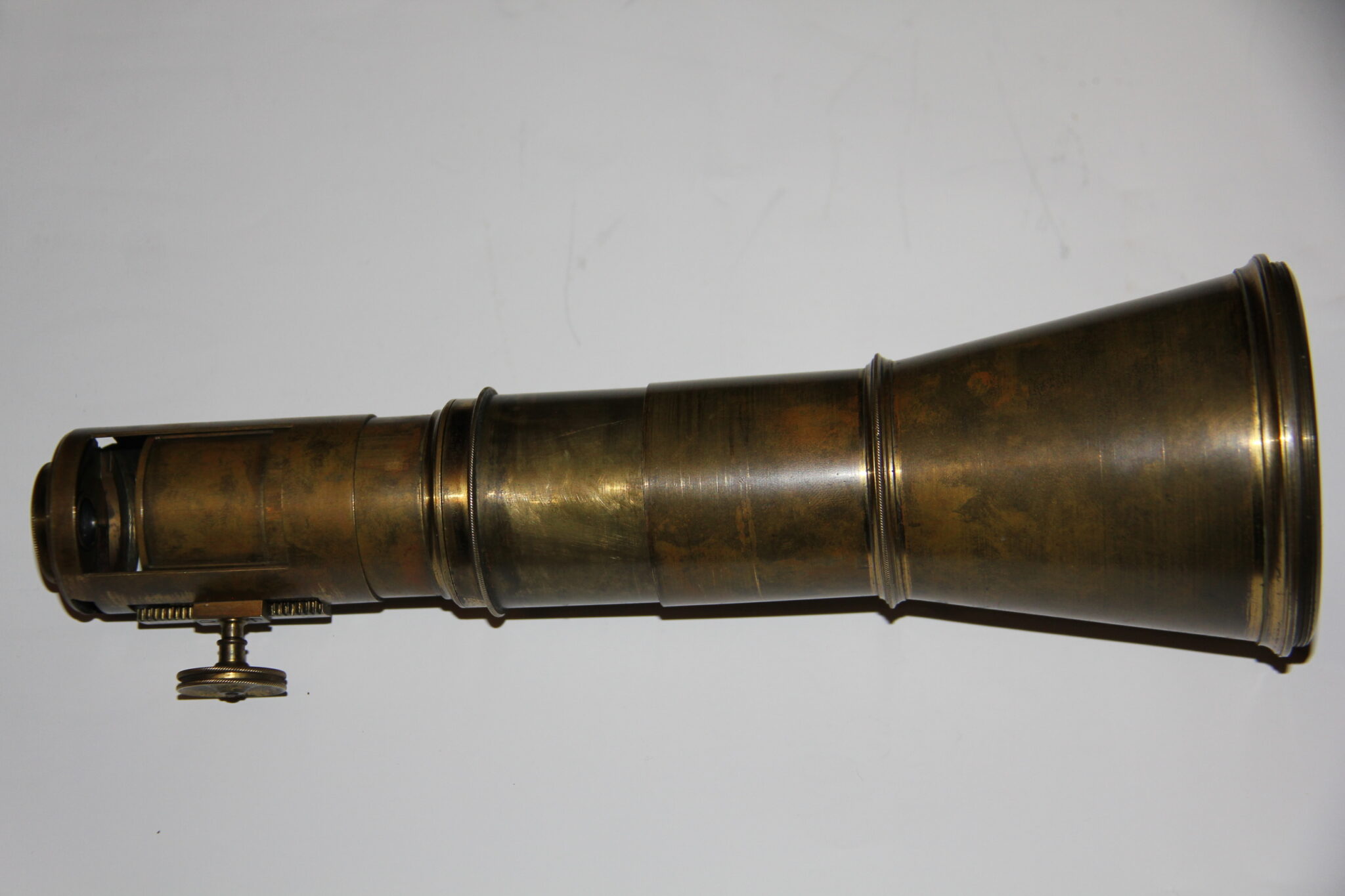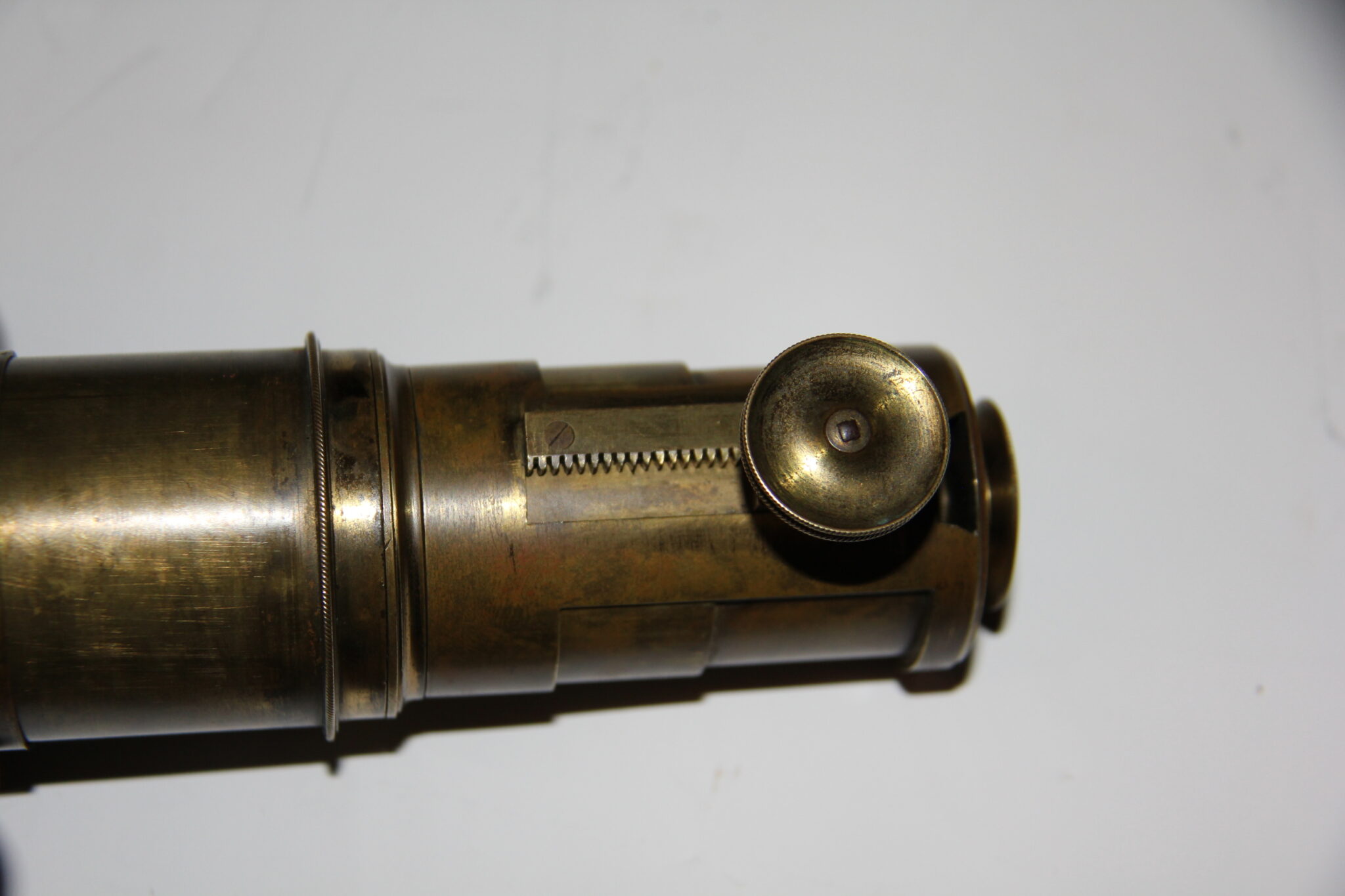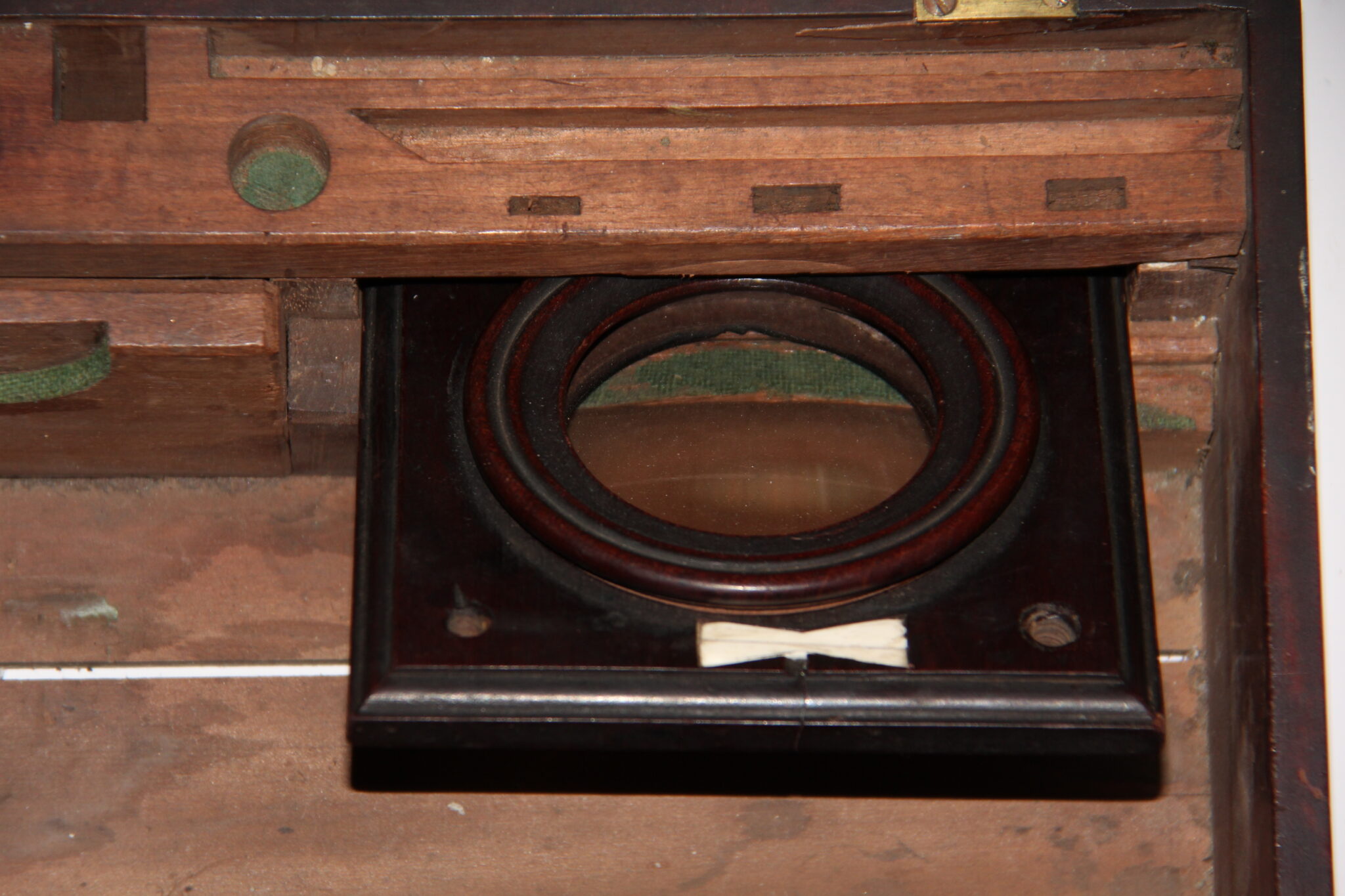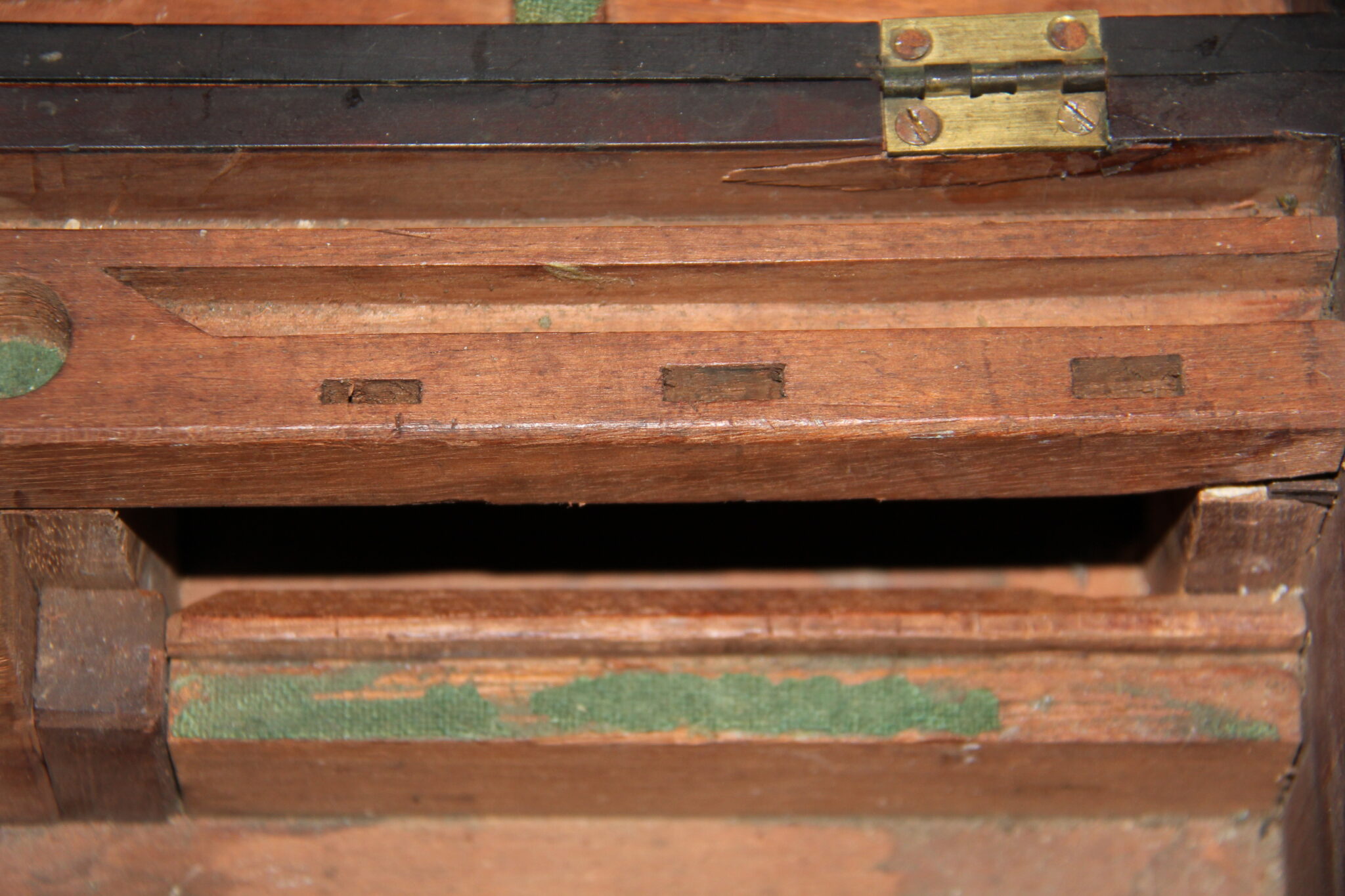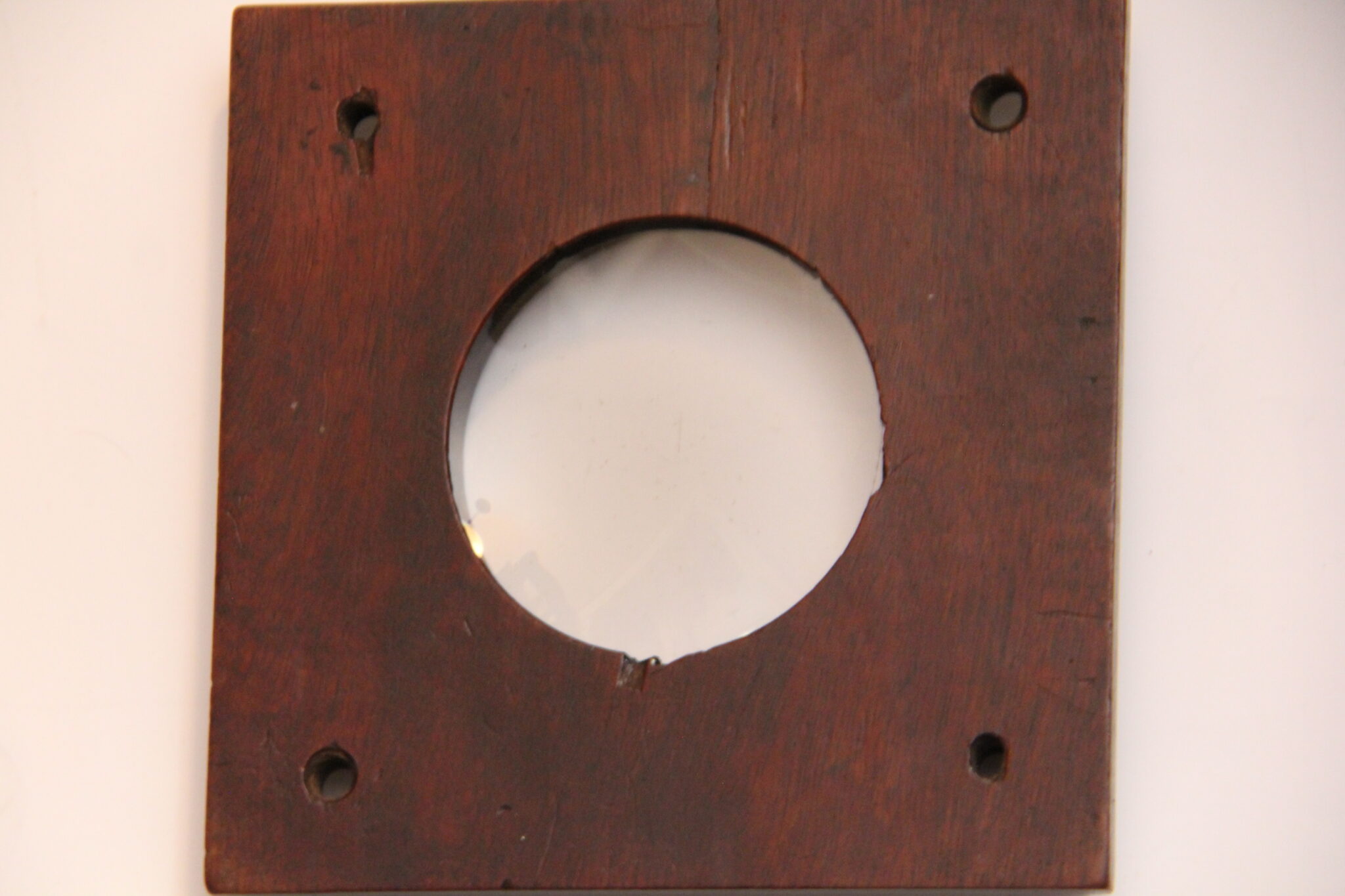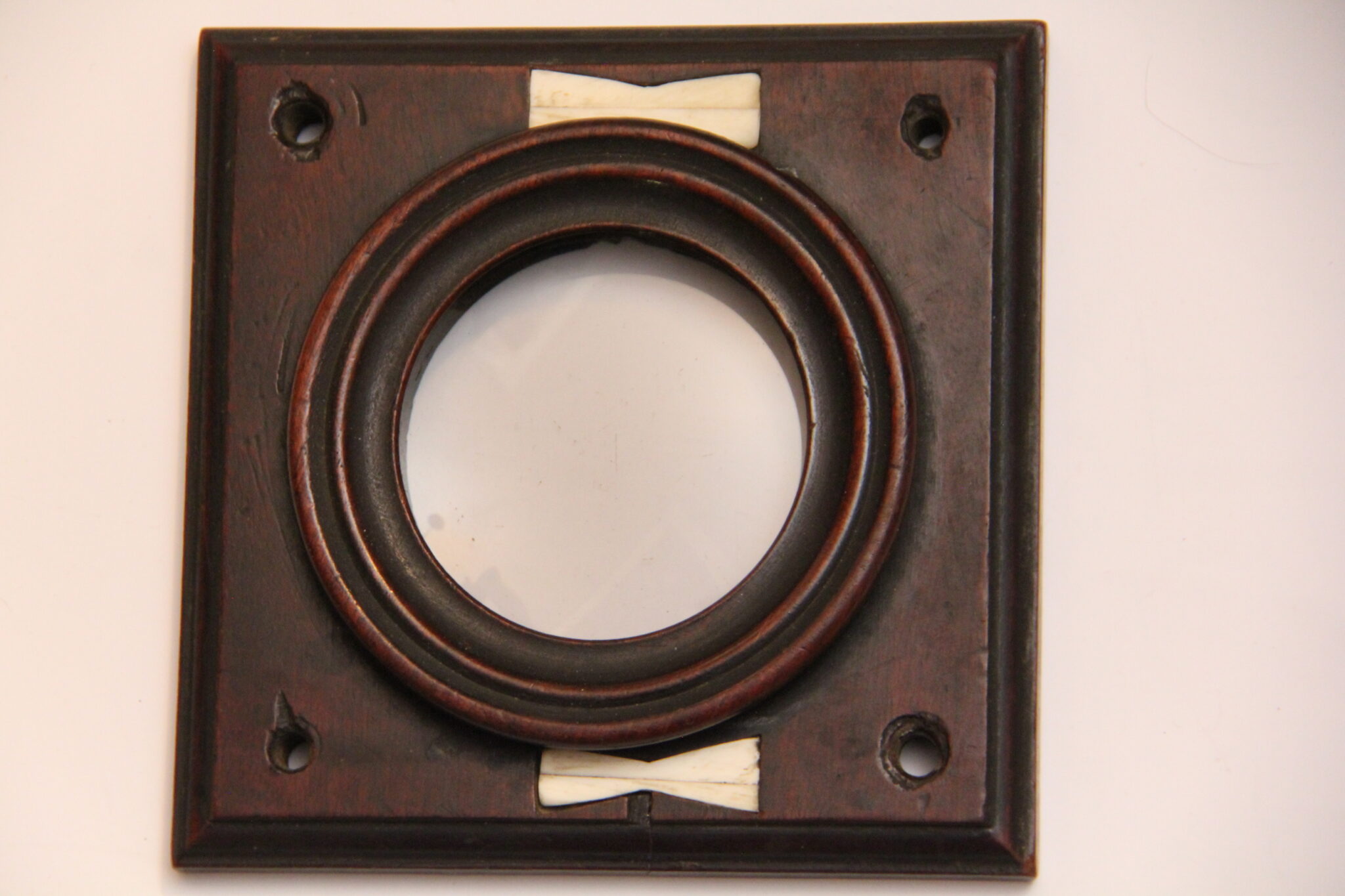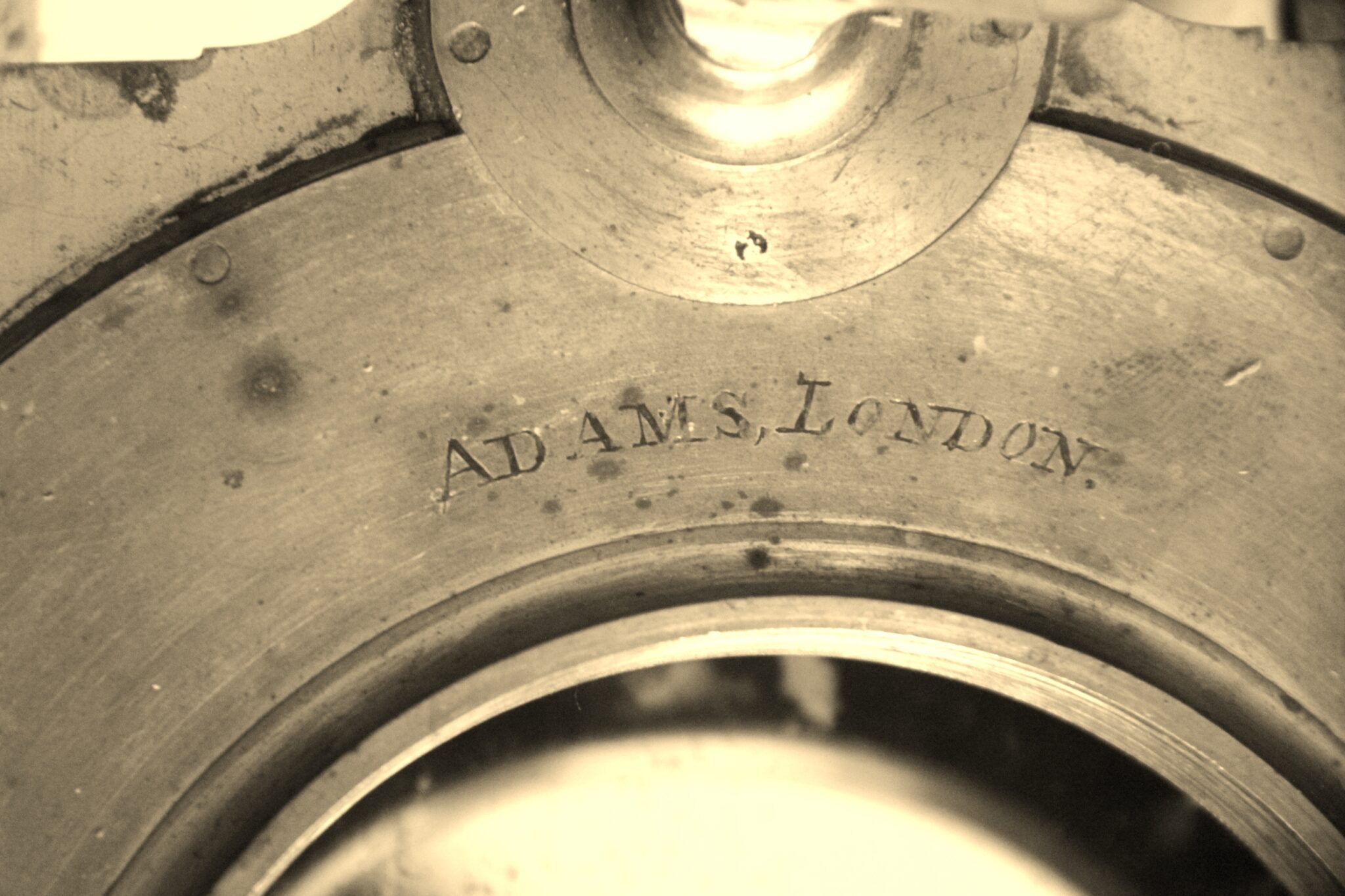Description
This unique compendium is a museum worthy piece, not because of condition but because of it’s rarity.
Signed “ADAMS, LONDON” in block letters (Dudley?), this was NOT a compendium made for the gentry but for a working man. In the late 18th/early 19th century, it was not unusual to attend a county Fair and see a tent or a hut set up for optical novelties. Here we have a person with all of his gear in one box. A camera obscura (biconcave lens in a wooden frame) for portrait/landscape sketching on one wall and a solar microscope with wooden sliders on the other (see B/W example sketches at the end of the photo gallery).
This individual had to have spent a large sum to acquire this simple yet unique compendium. Adams instruments were expensive ! This was a simplified version yet optically pleasing to the attendees.
Housed in a mahogany box, the compendium has been well used (little original lacquer intact) and has seen an unfortunate cleavage of the mirror (recent?) yet it retains all of it’s original silvering (10 x 3 1/2 inches). The mirror tilts and turns by rack and pinion gears and butterfly screws. A large diameter solar microscope terminating at one end to the 6 x 6 inch signed wall plate and at the other with a choice of a low power lens insert or a racked solar adaptor for insertion of transparent (wooden) or opaque (brass) sliders. The terminus has a slot for optically higher power wedges but these were either never used or lost over time. There is only ONE higher power lens and no provision for others (up to 6 in some compendiums for the nobility). Bone talc box included. The empty square hole in the case is probably for a set of large bone sliders, which I could provide.
In addition, there is a mahogany framed lens (5 1/4 inches square) with bone reinforcements to act as a simple camera/ camera obscura. The same roped (diagonally knurled-18th C.) thumb screws could be used for both. Initially on display, there is a slotted piece of mahogany in the lid with a wooden retaining clip for the camera obscura (lid can be closed and it is secure in this configuration) but when I had the microscope disassembled, I found an empty cavern in the rear of the box with an angled slot for the camera obscura to be stored atop the solar microscope (first out, last in). See the photos for both arrangements please.
Optically, both instruments are wonderful for their age and obvious usage. The owner knew what he had and took good care of his equipment for his trade. The rack and pinion is perfect, for example. As mentioned, the lacquer is worn off of the body tube and focal assembly, retained on the wall mount, the mirror is cracked near it’s end but this does NOT affect the image as it is outside of the optical plane. All lens are intact and in surprisingly good condition. The wooden sliders retain their specimens and there are both rectangular and round opaque mounts/adaptors in the set. As mentioned, this is a museum piece. Not for it’s condition but for it’s rarity as a working instrument and as a survivor of 225 years !
The mahogany box measures 15 1/2 x 8 1/2 x 5 inches deep. It has a shrinkage crack to the bottom.
Ask the Dealer
Dealer information
 Scientifica Opticae Inc.
Scientifica Opticae Inc.
Scientifica Opticae
Mark Hacking (Scientifica Opticae Inc.) has been an avid collector/dealer for over 40 years. A former Science teacher, he has an innate love for anything natural or mechanical. Specializing in optical (microscopes, telescopes), surveying, medical, weighing and drawing instruments, he is an active participant of the Scientific Instrument Fair in London. Living in Stratford, Ontario, Canada, with his wife and two children; Mark looks forward to meeting as many fellow collectors as possible, and has a worldwide following on eBay (Sciopti). As of Nov. 1/24 my email has changed to either [email protected] or [email protected].




